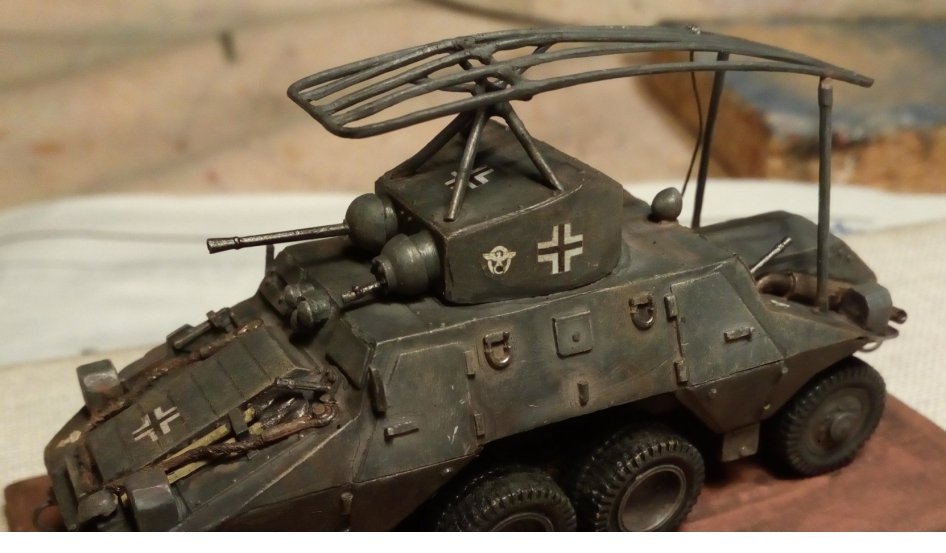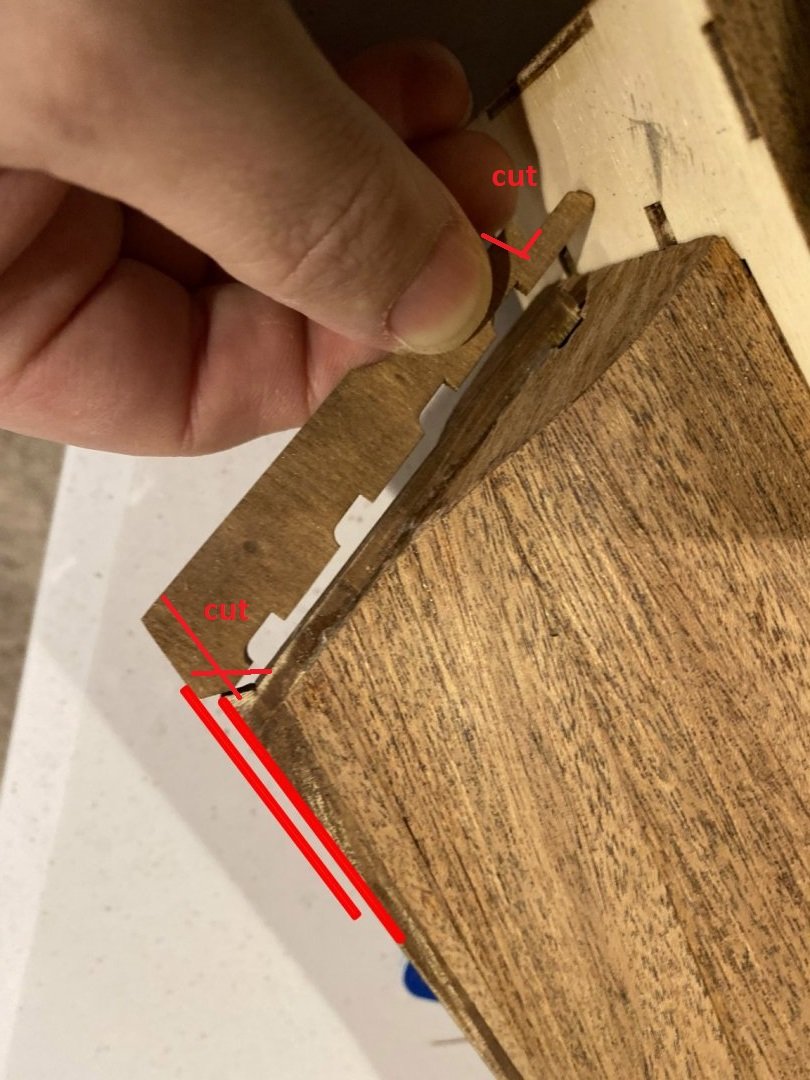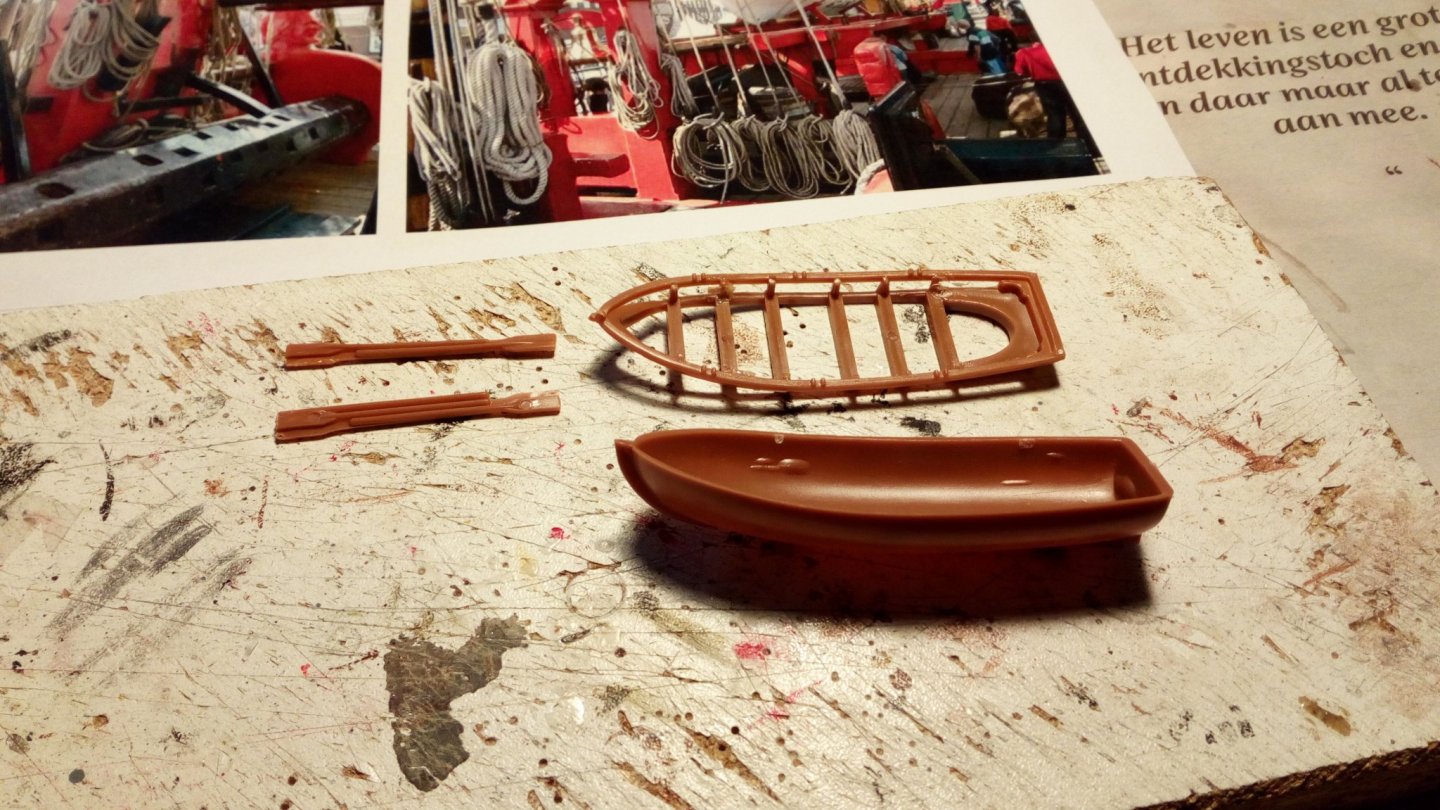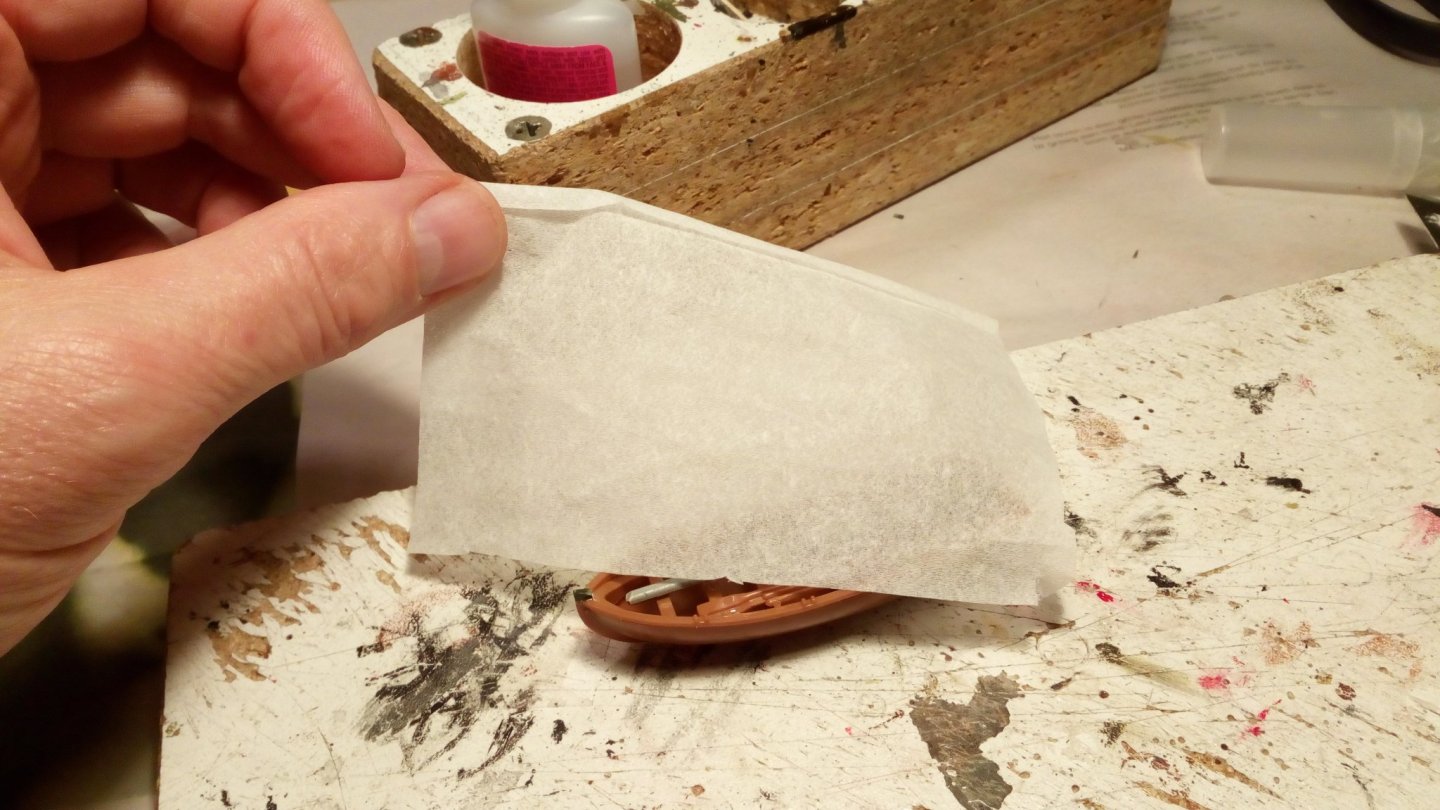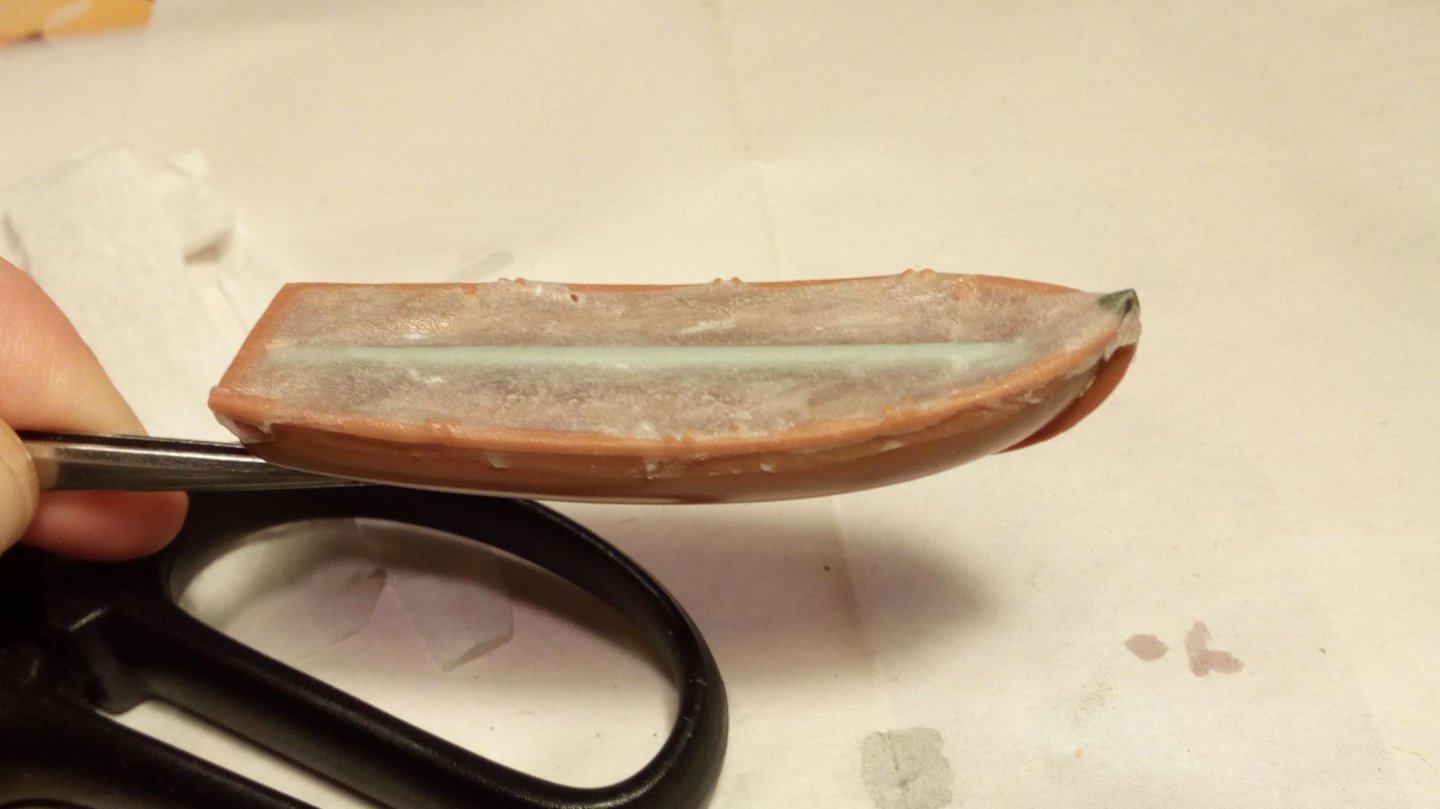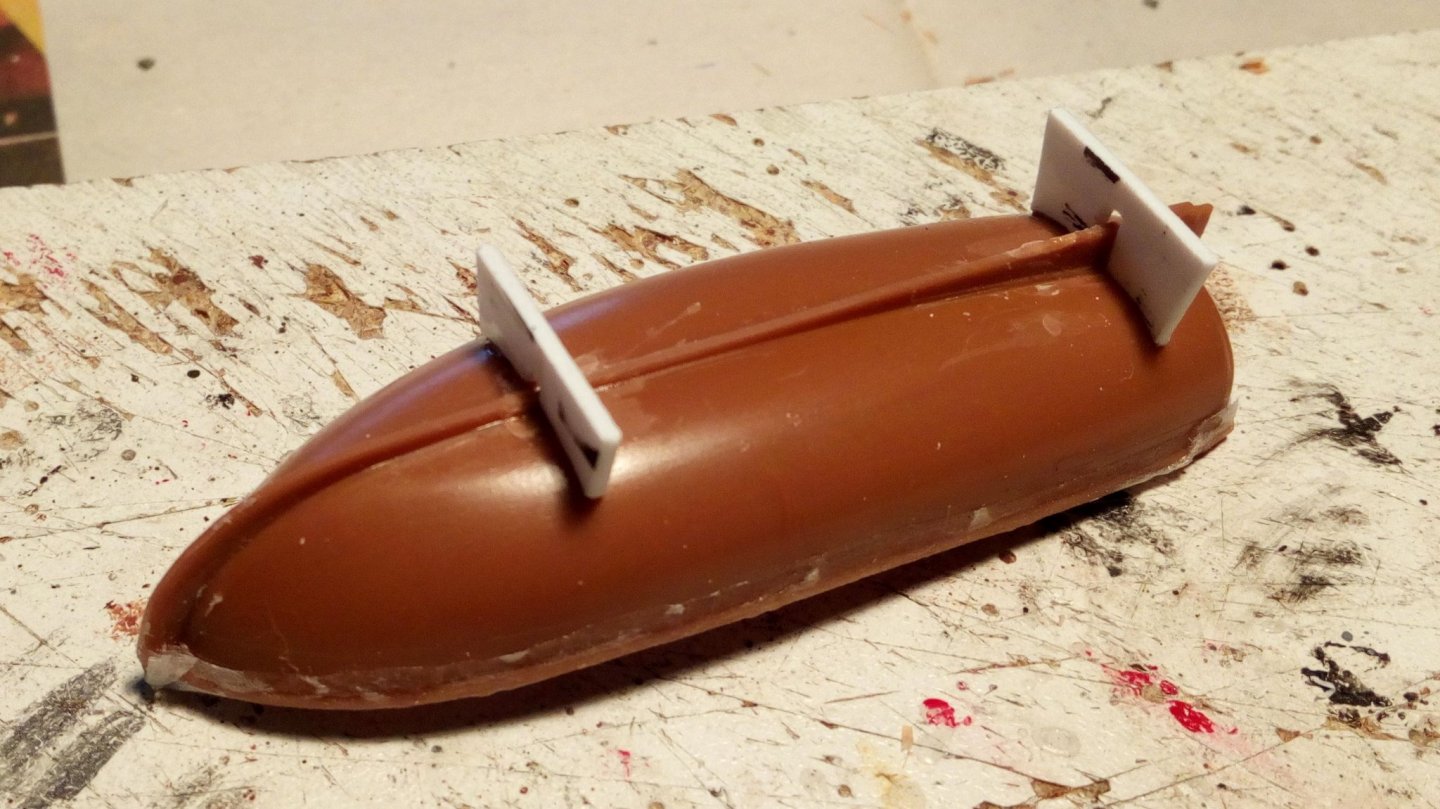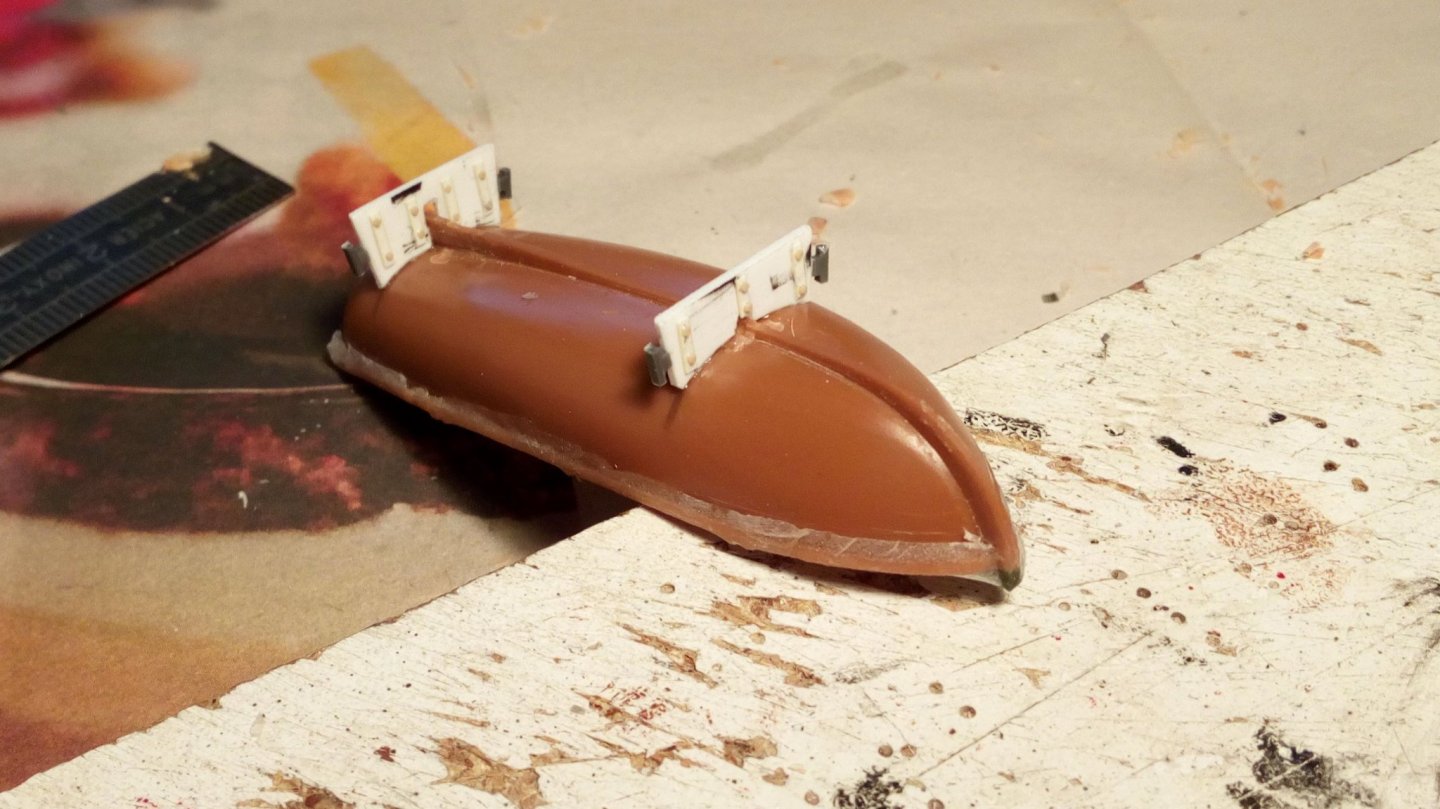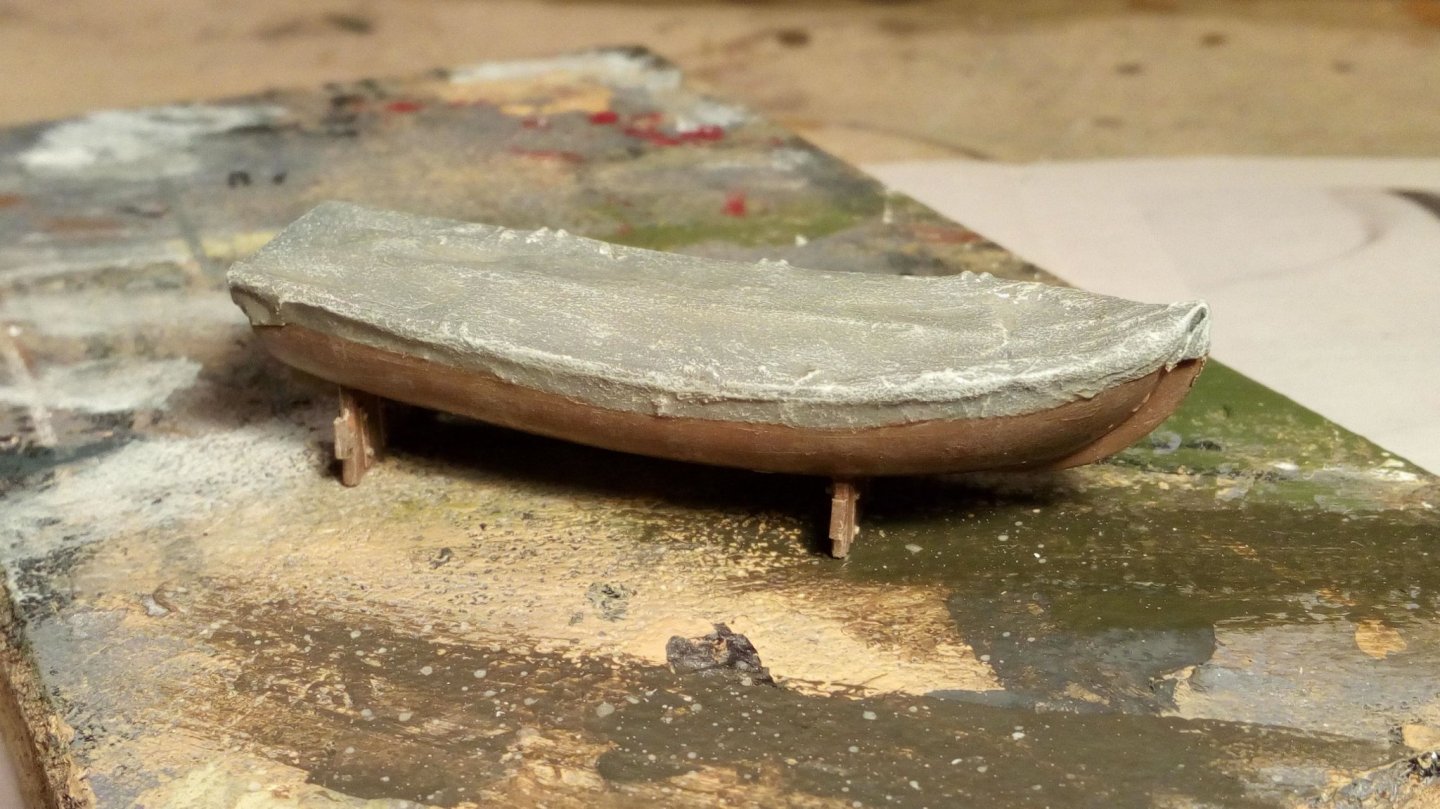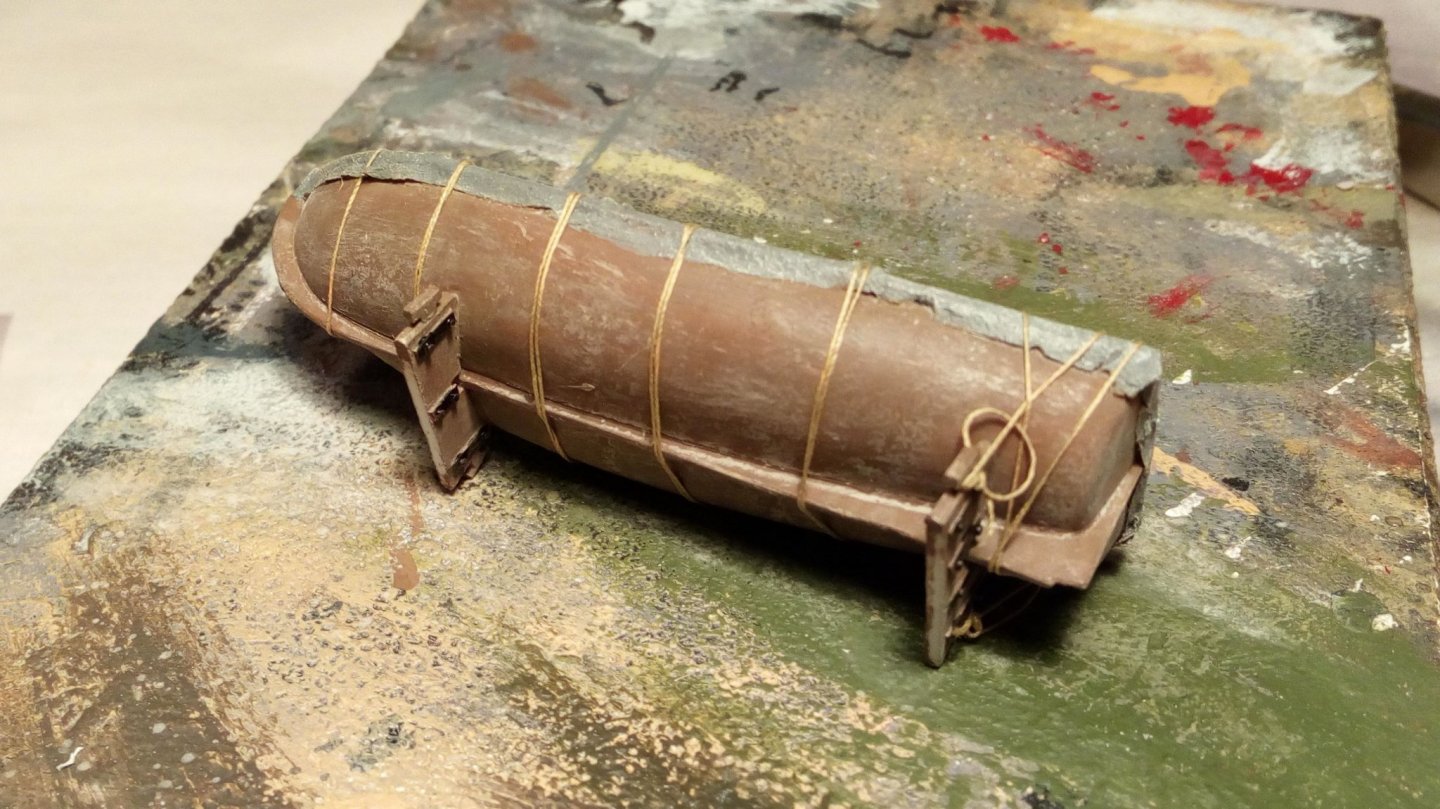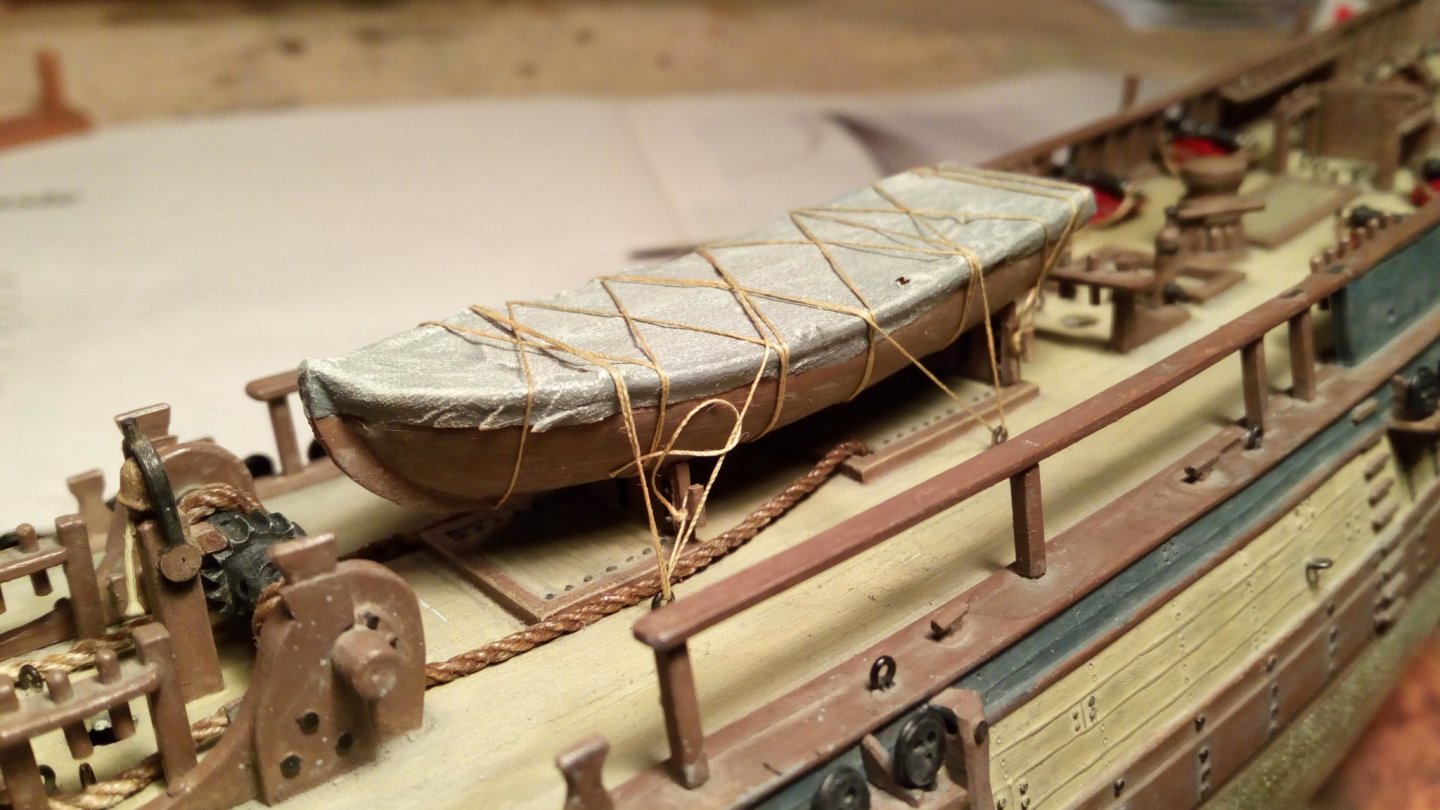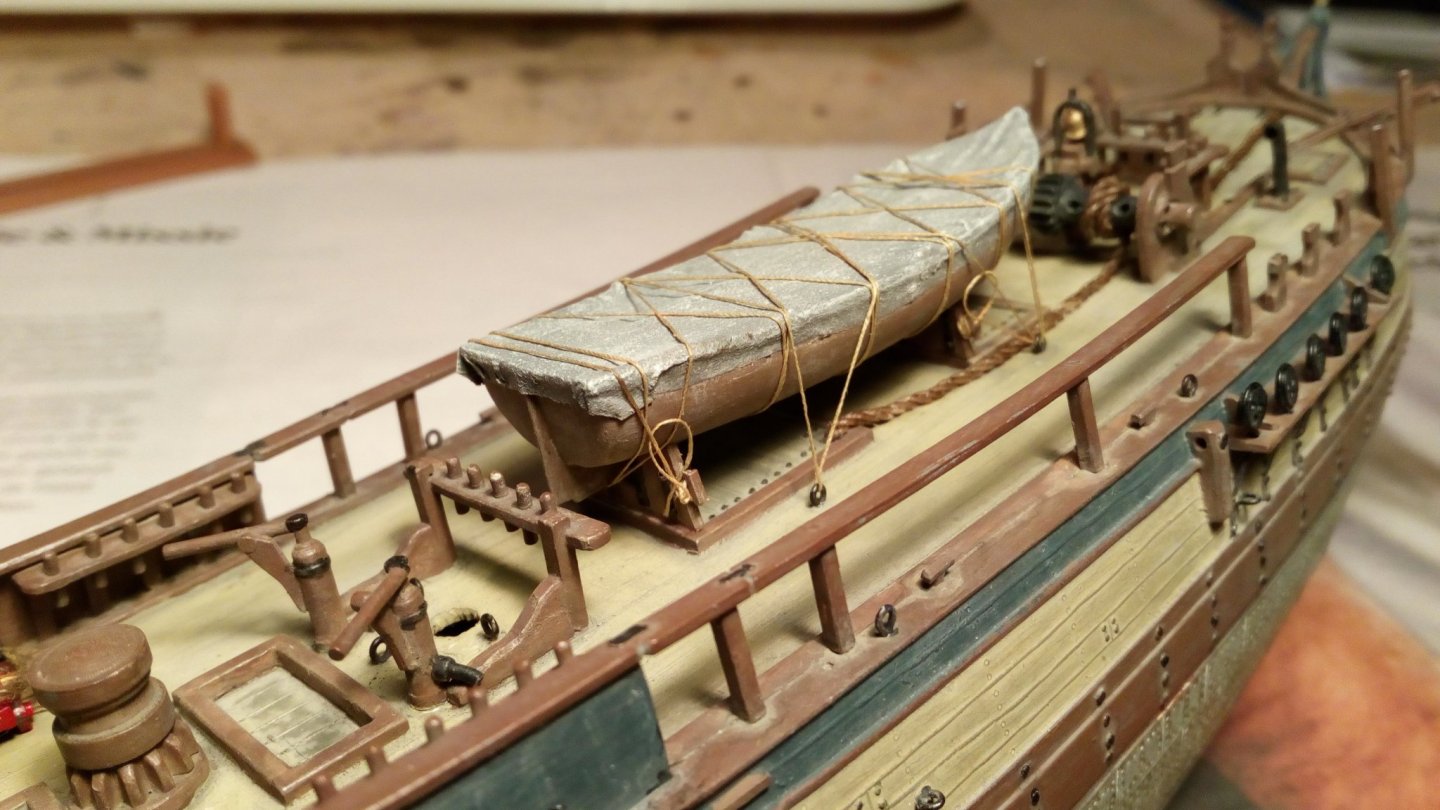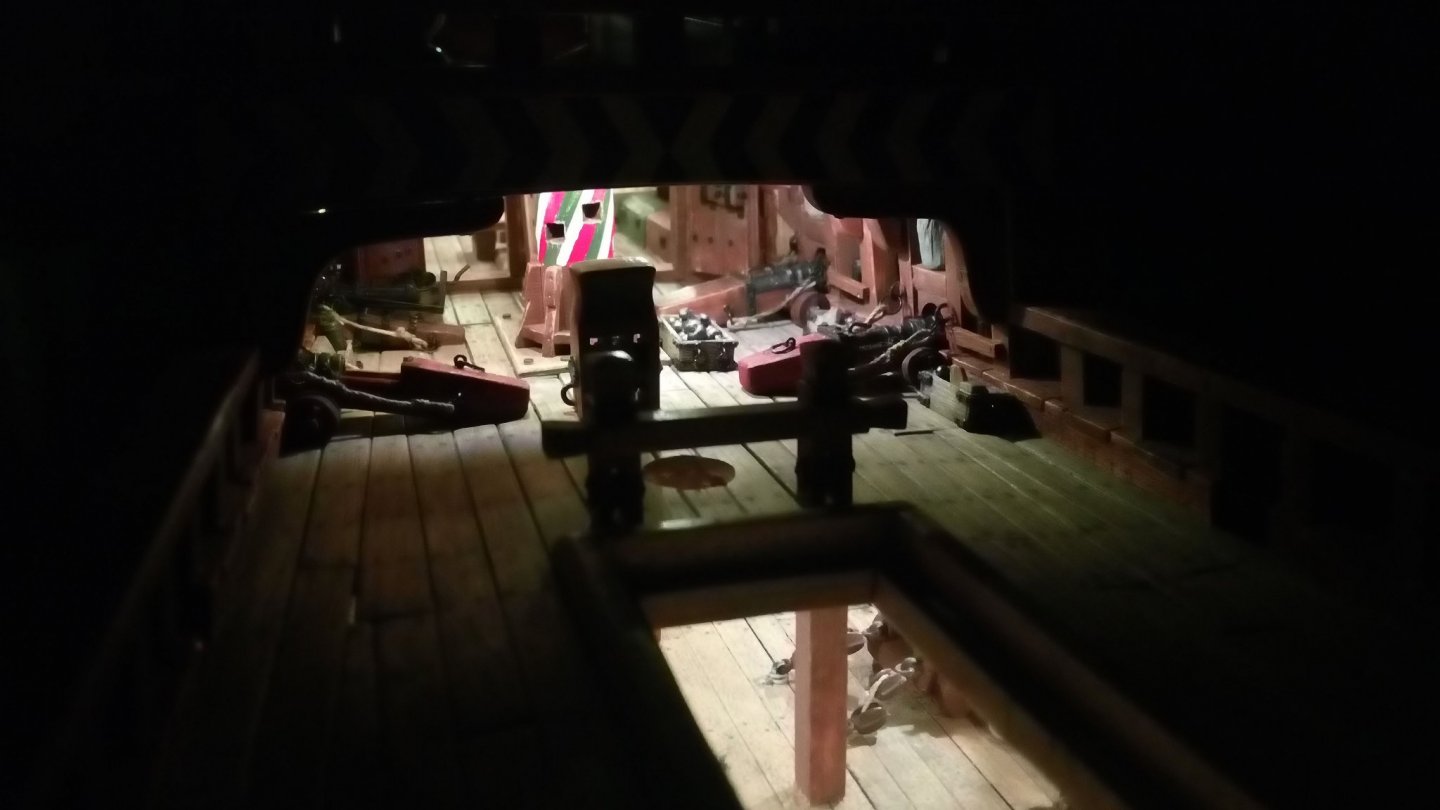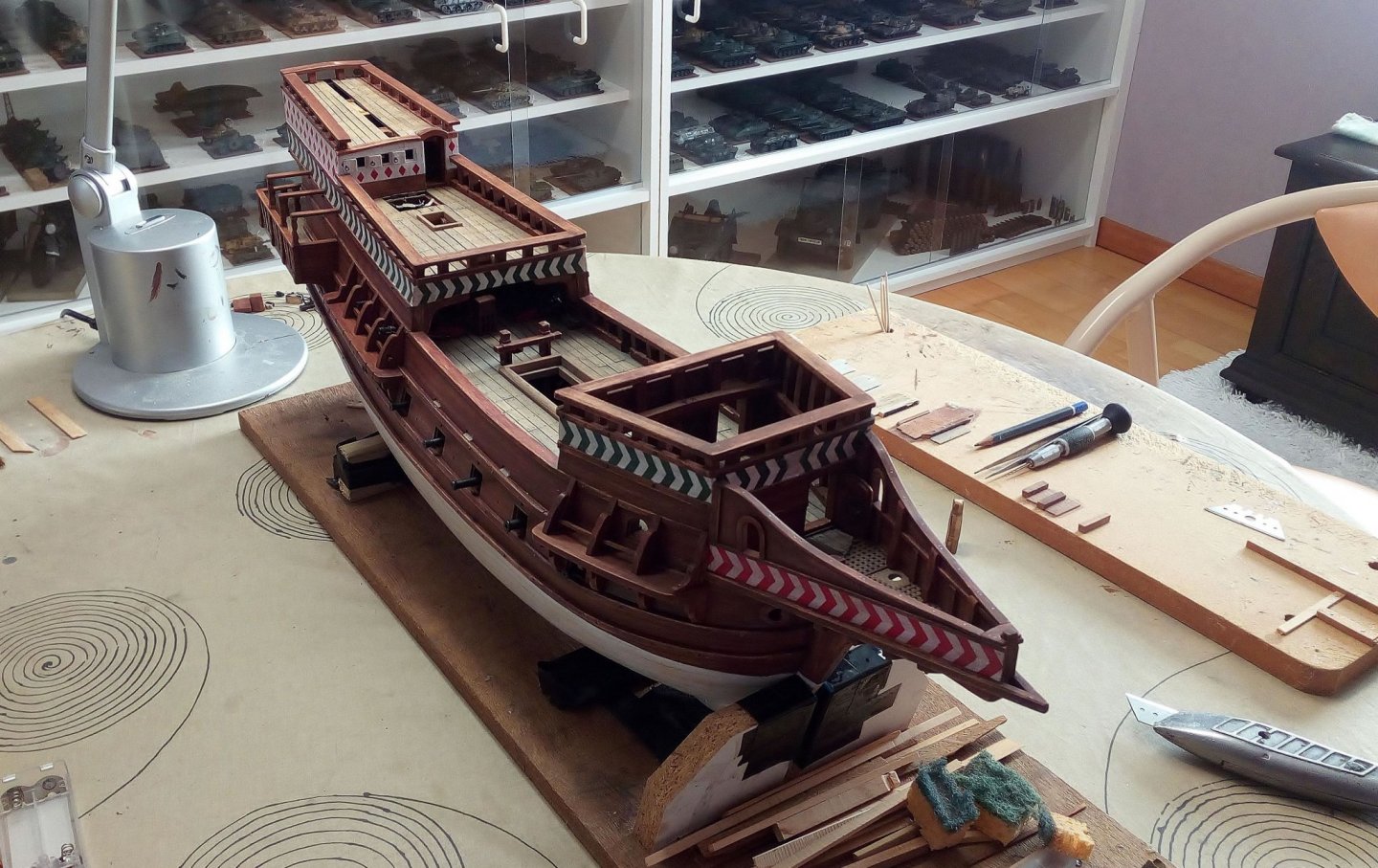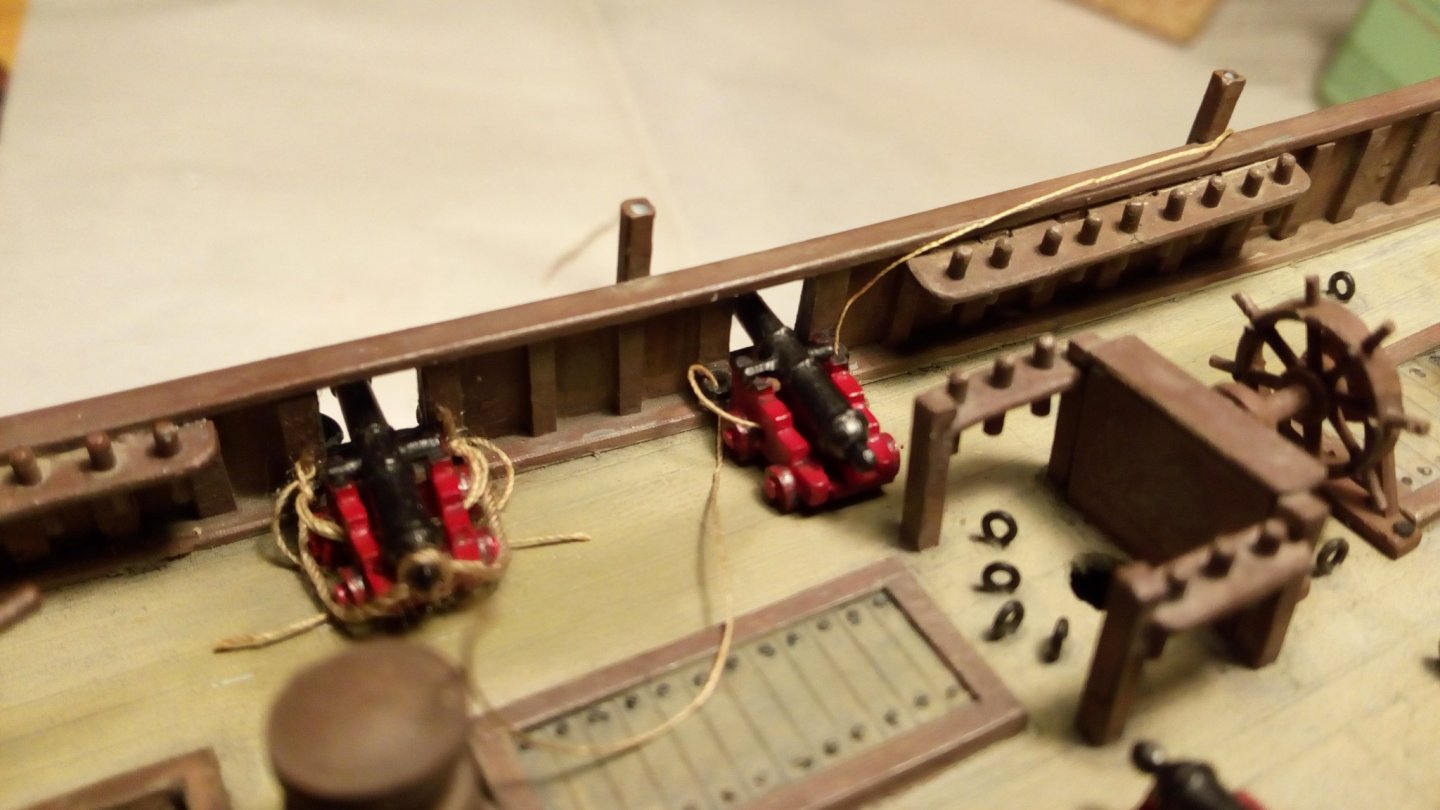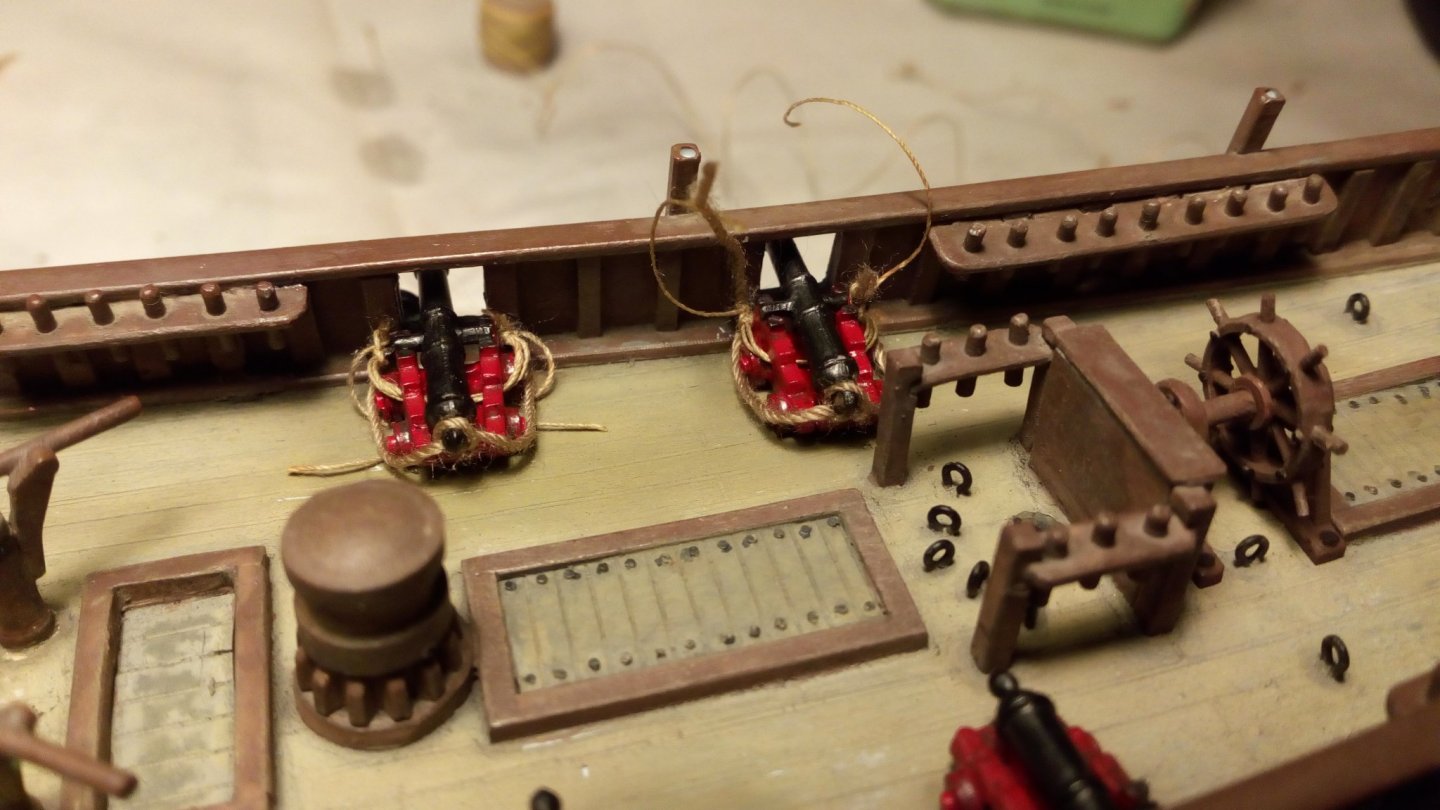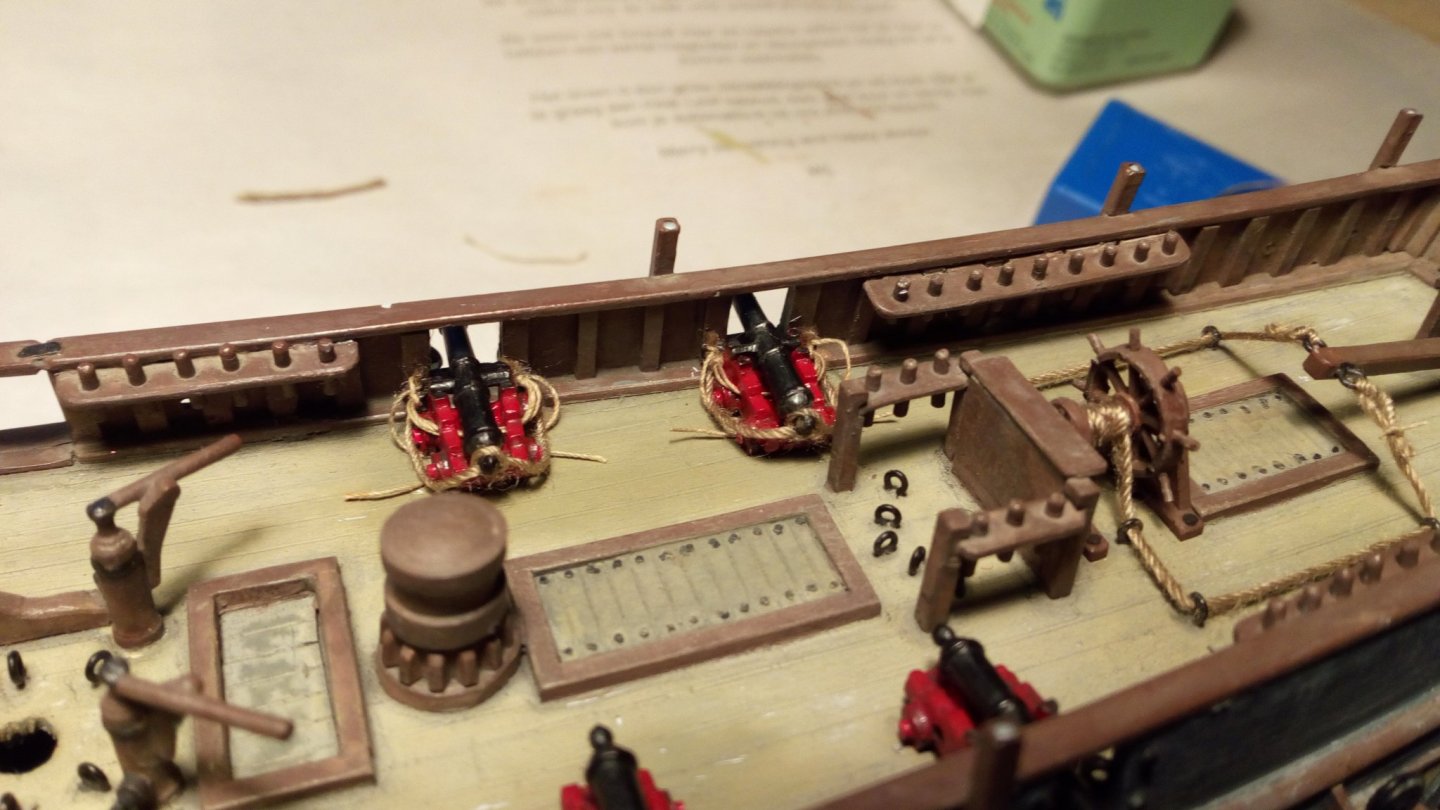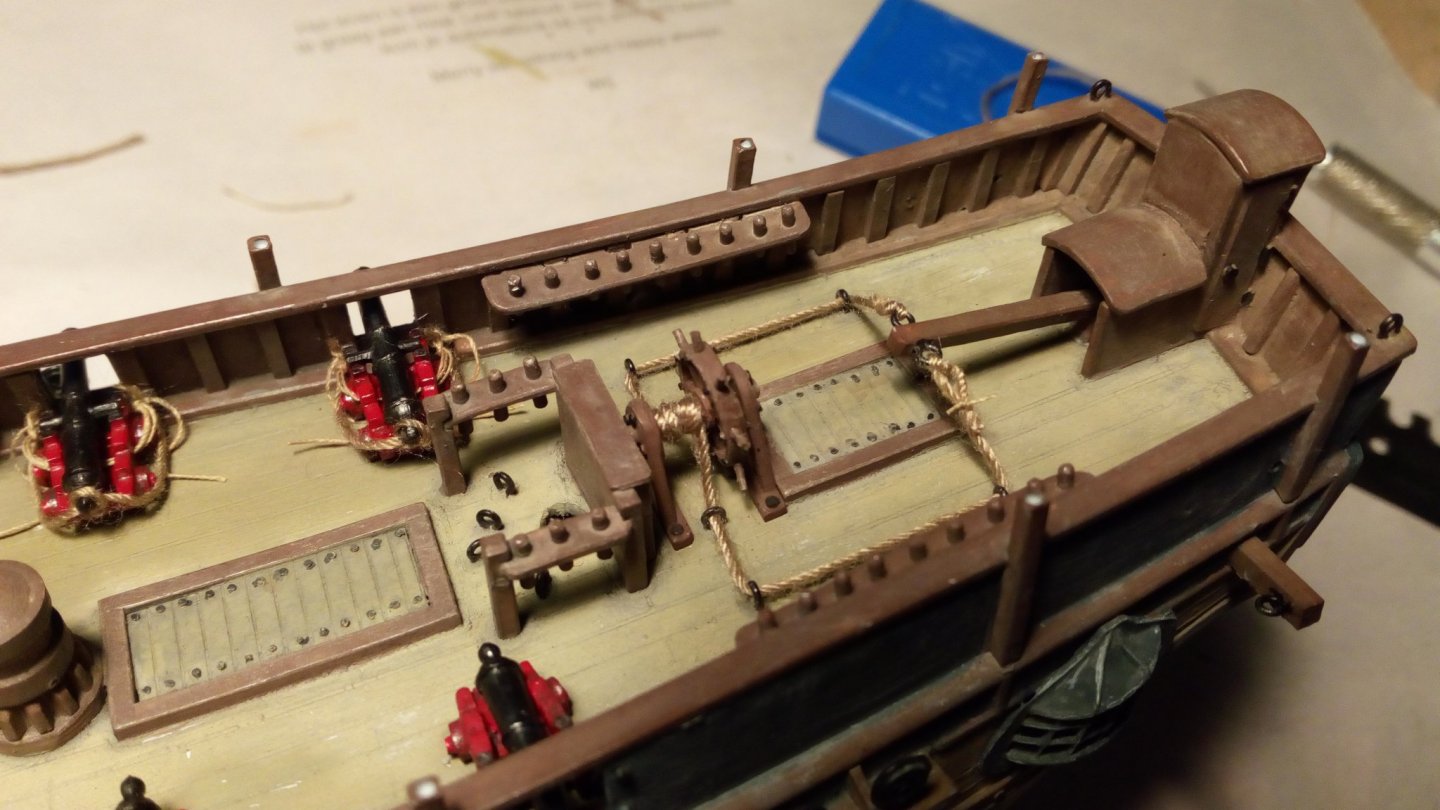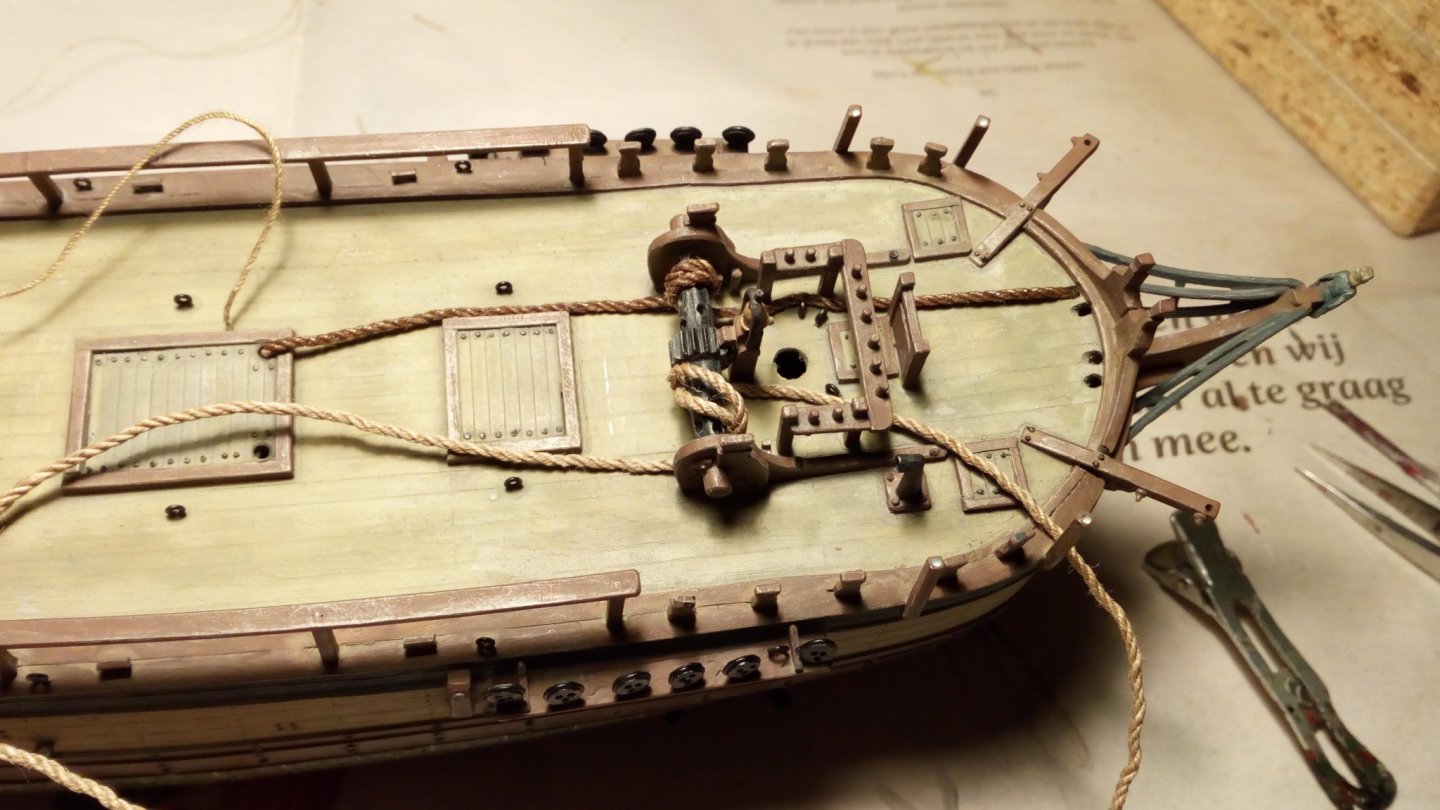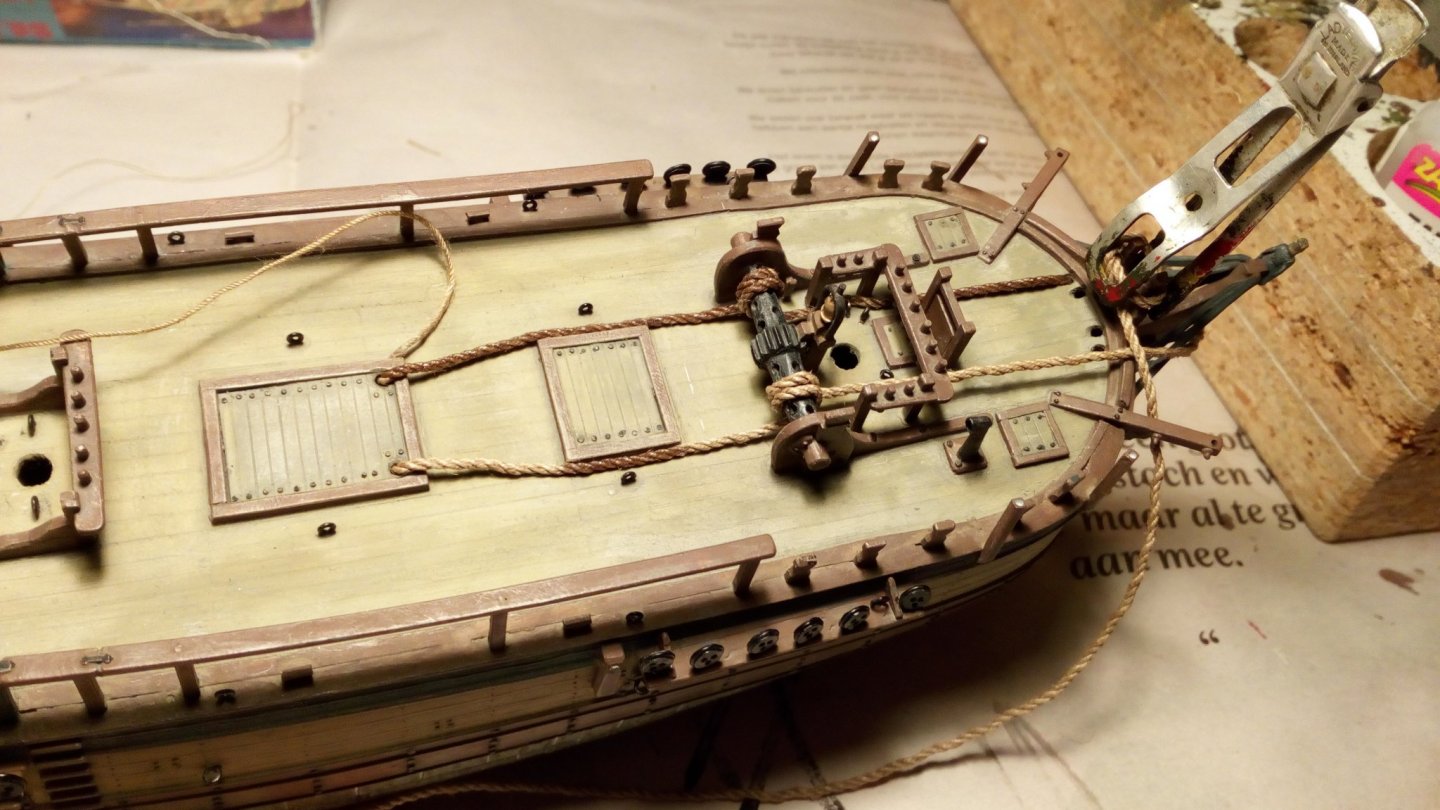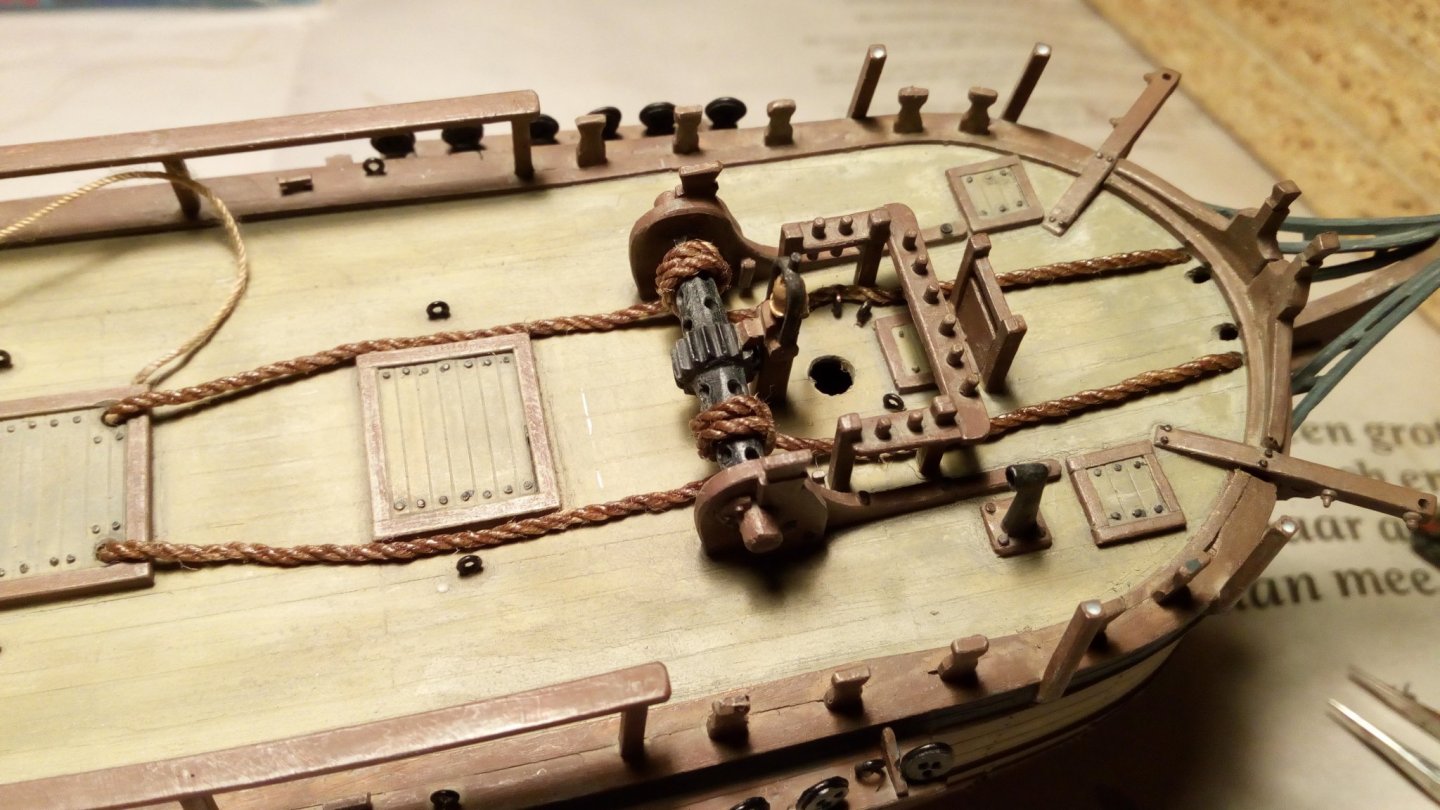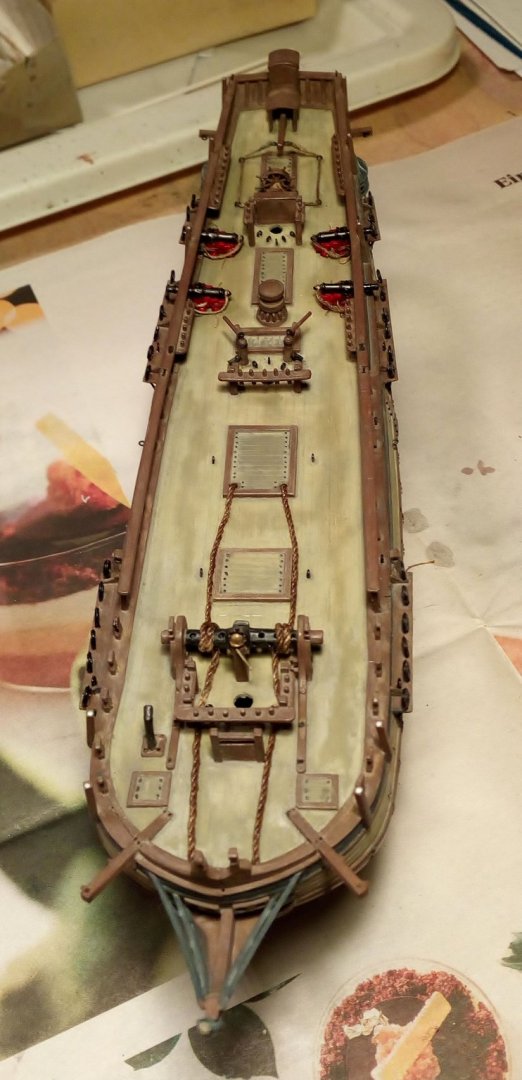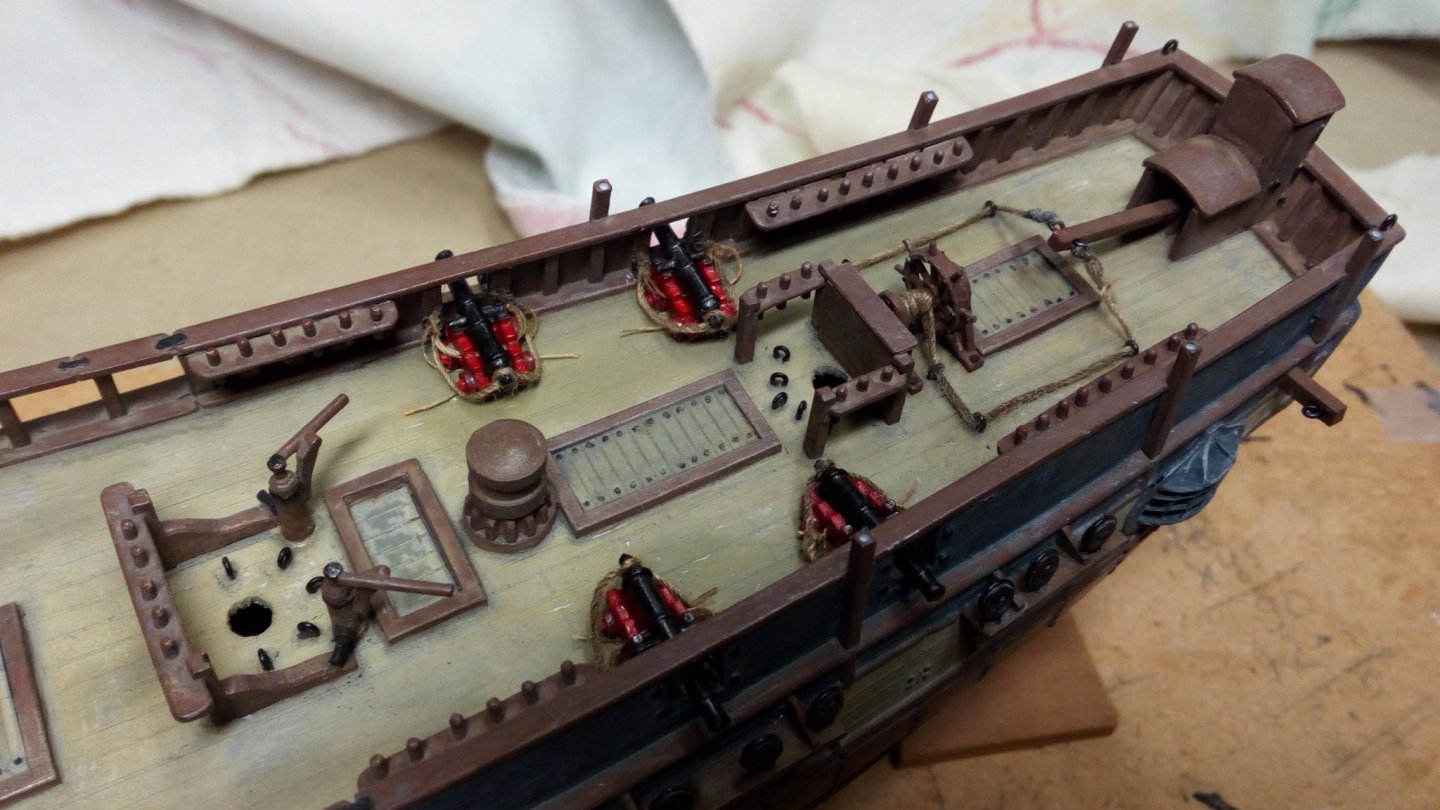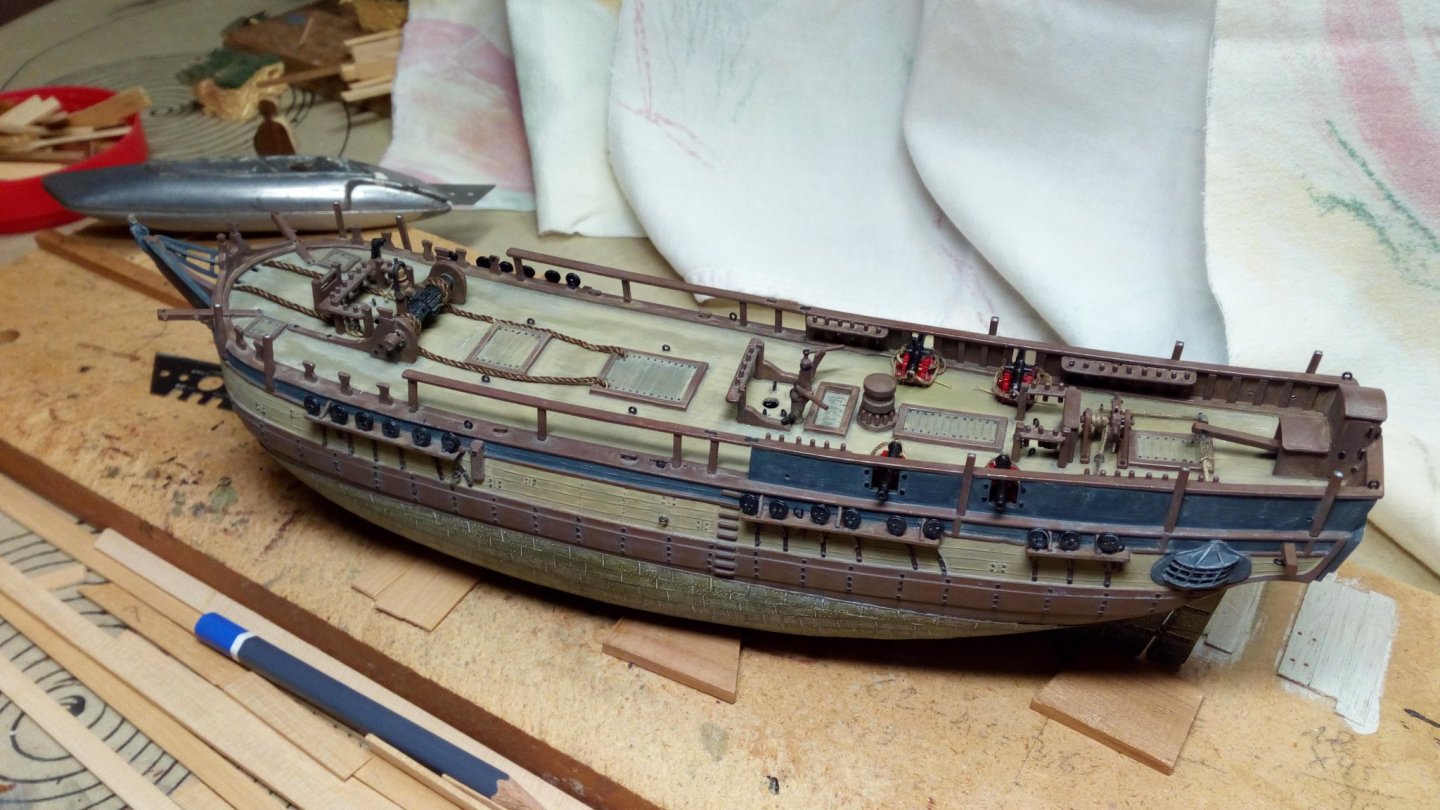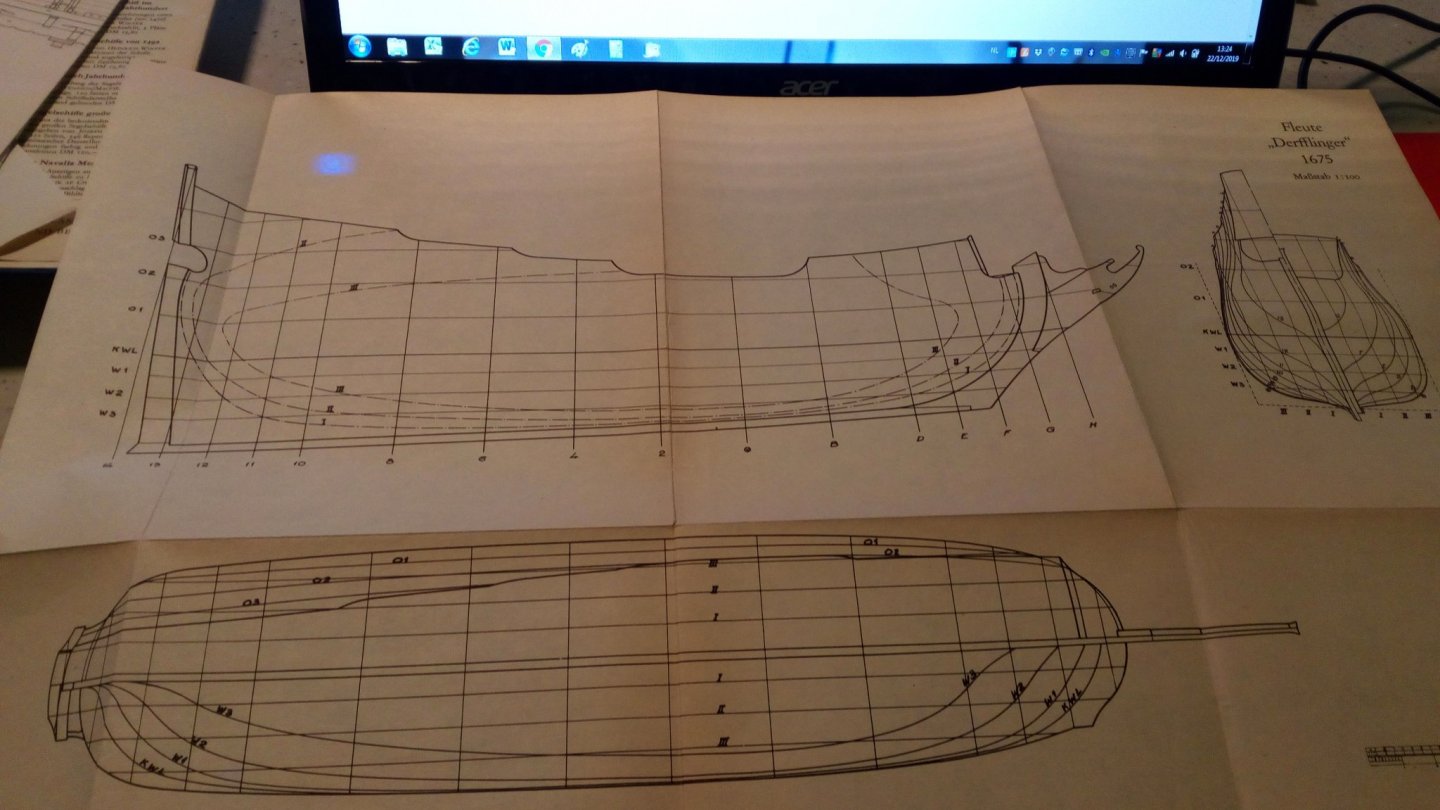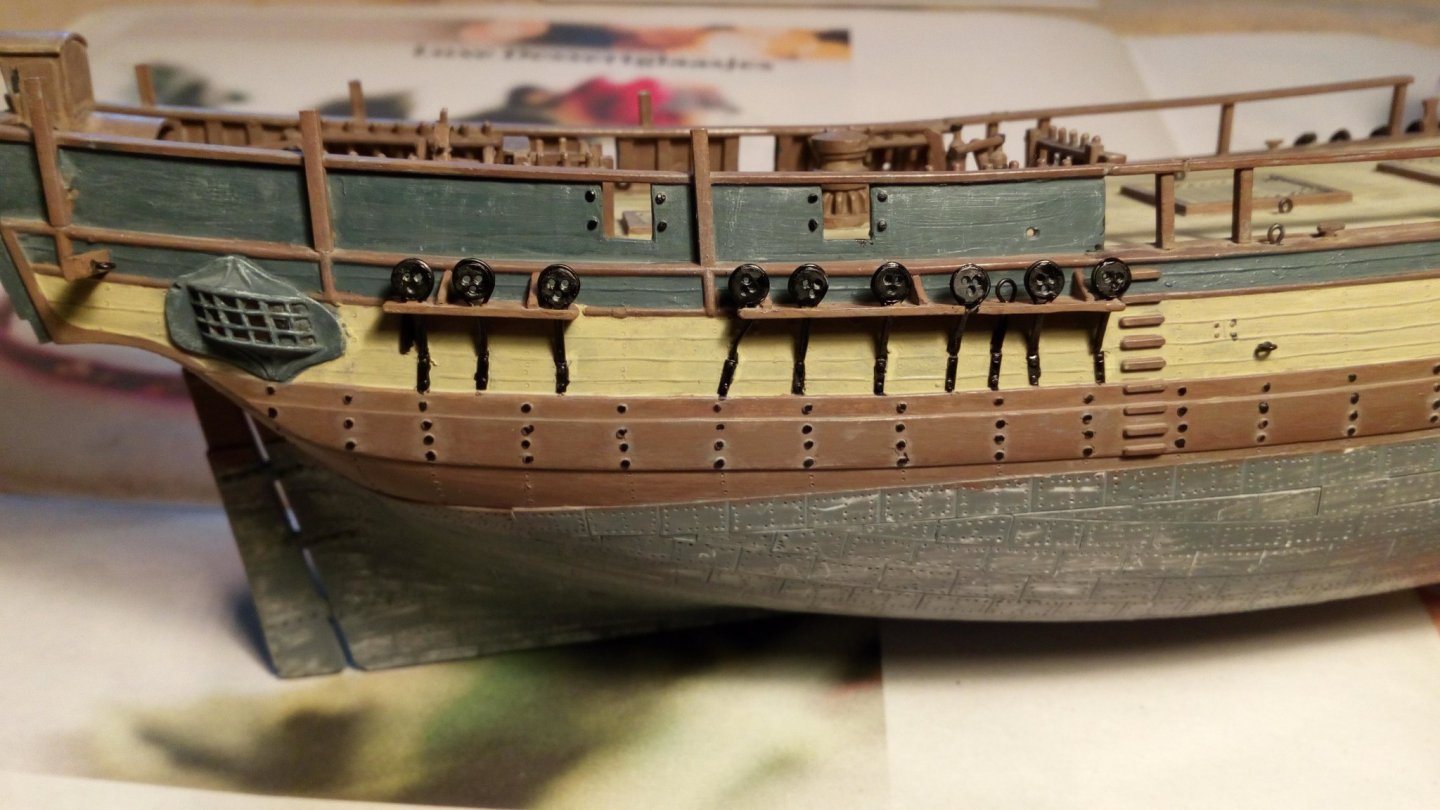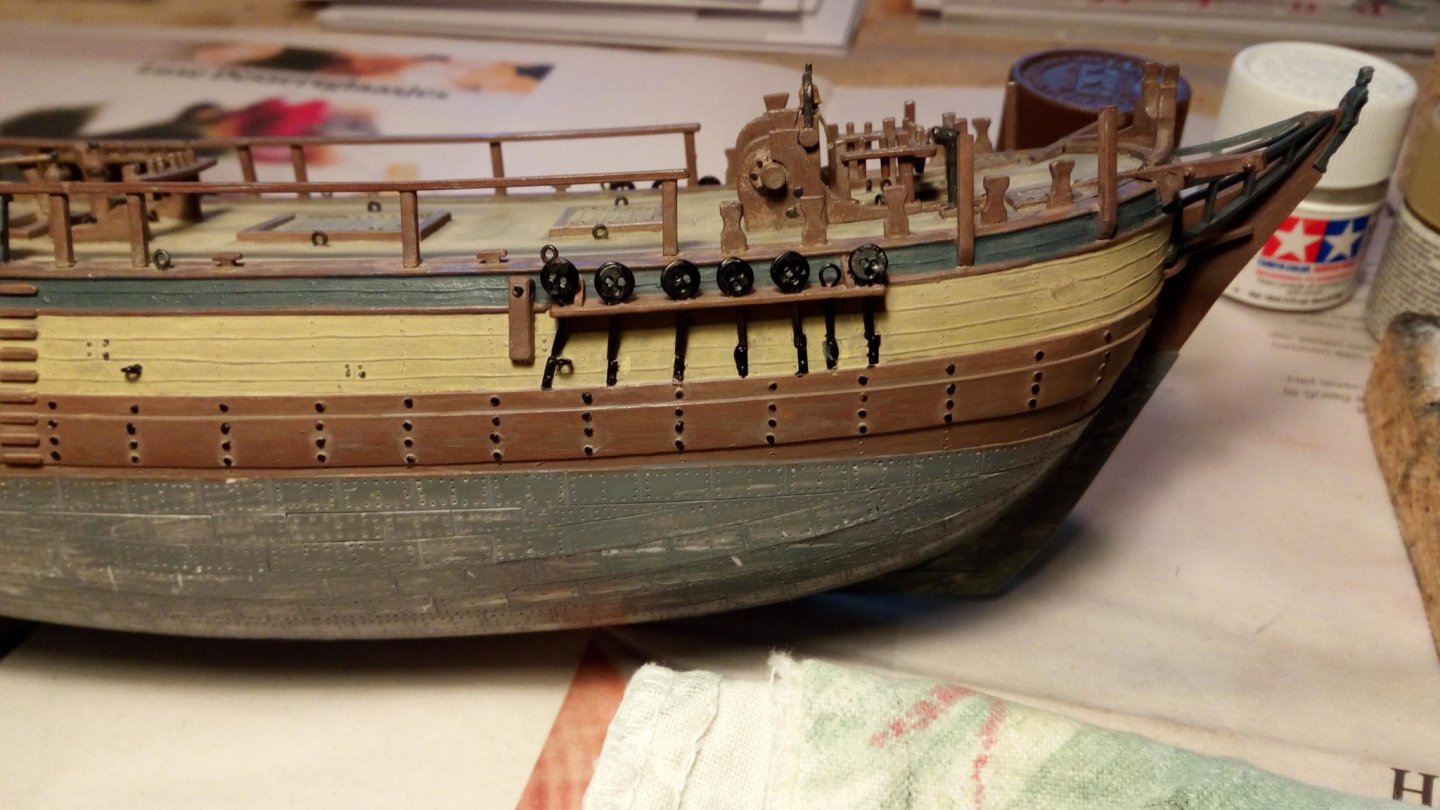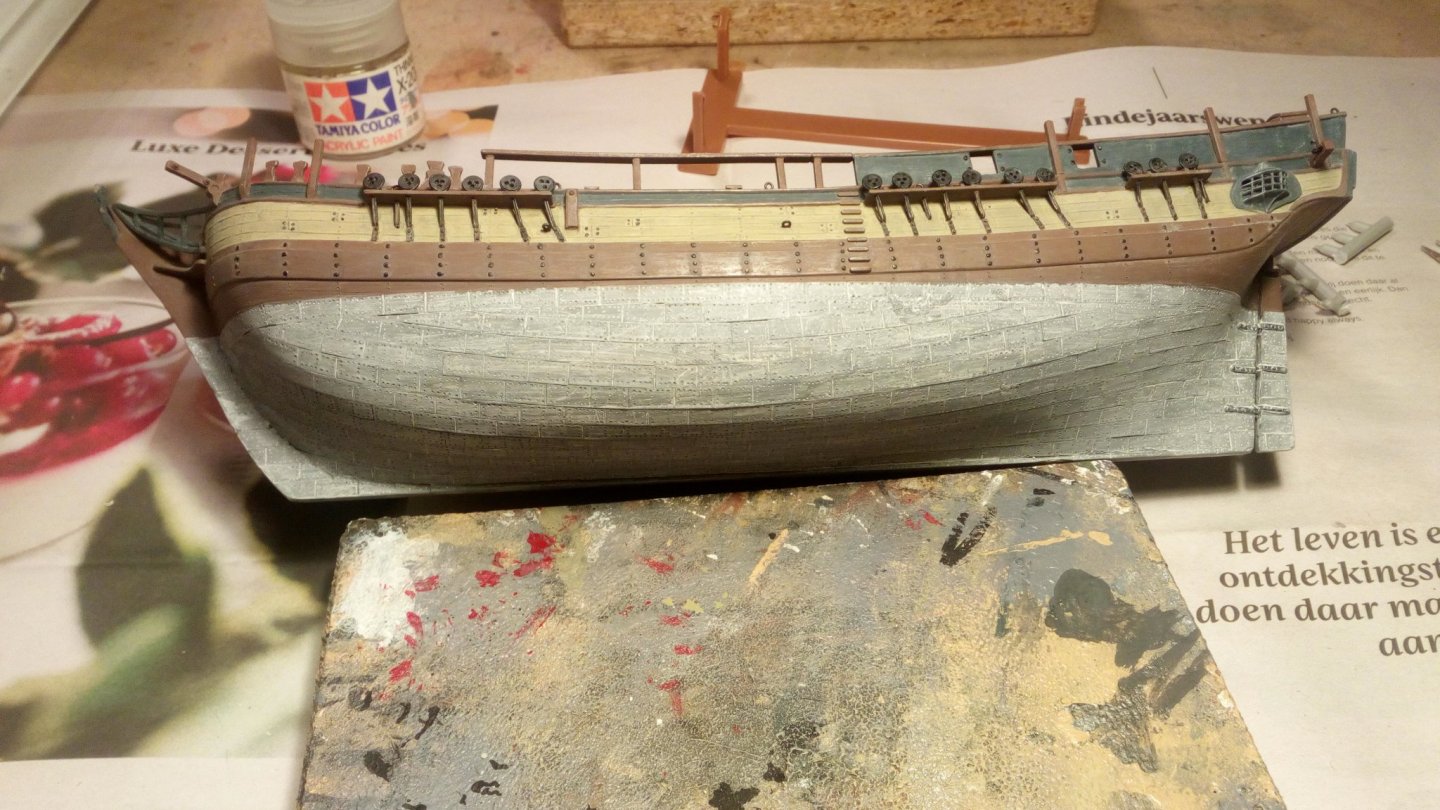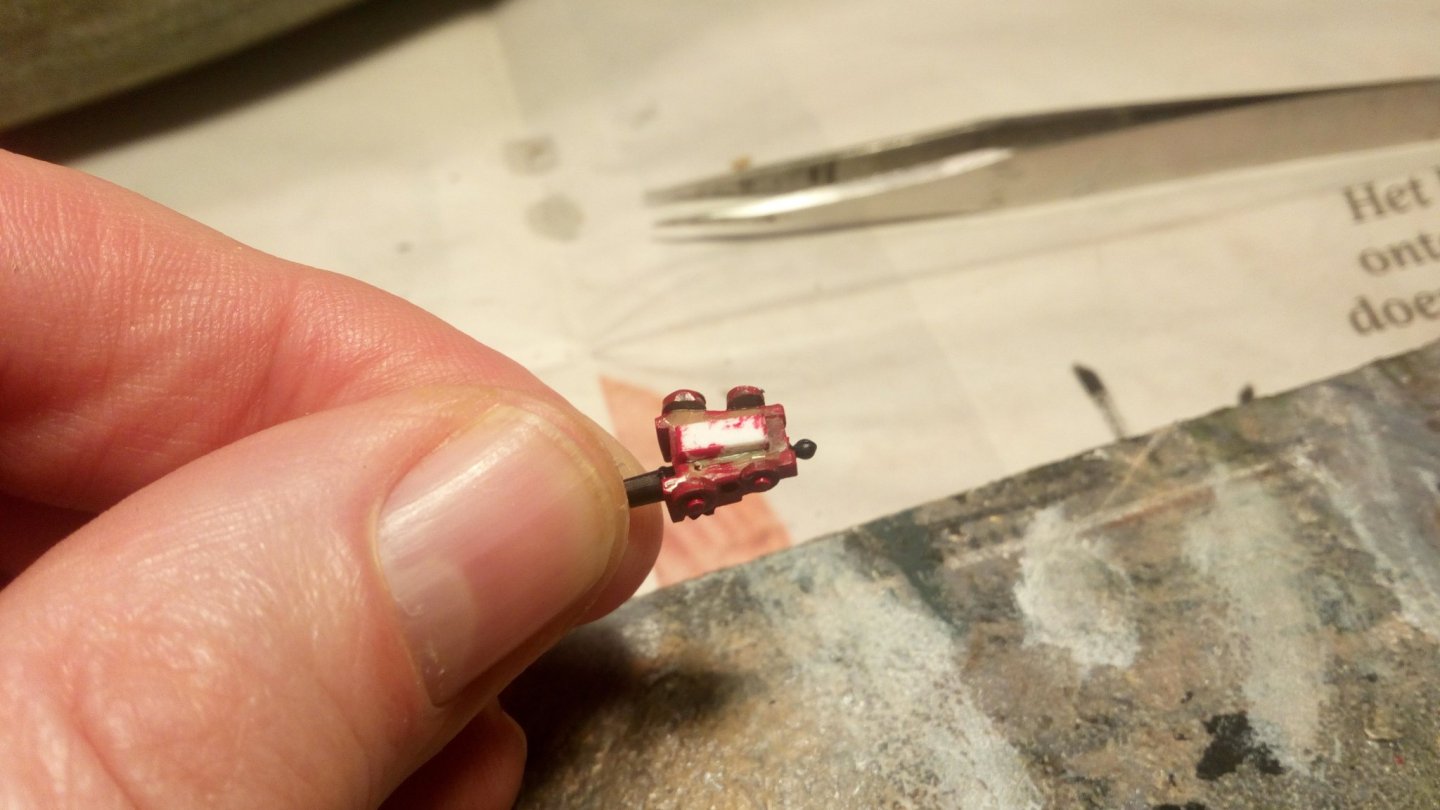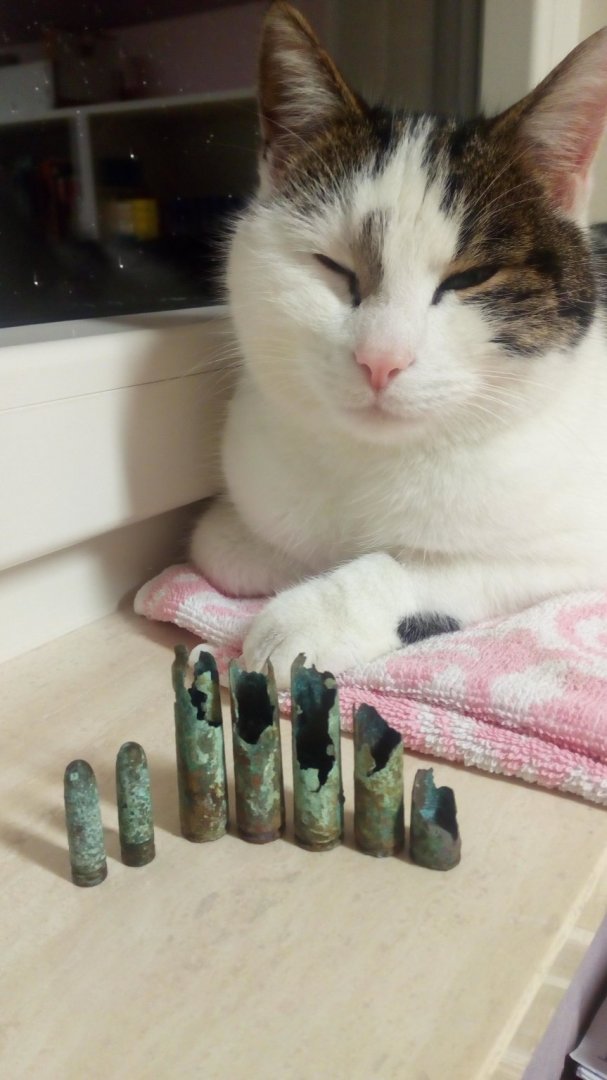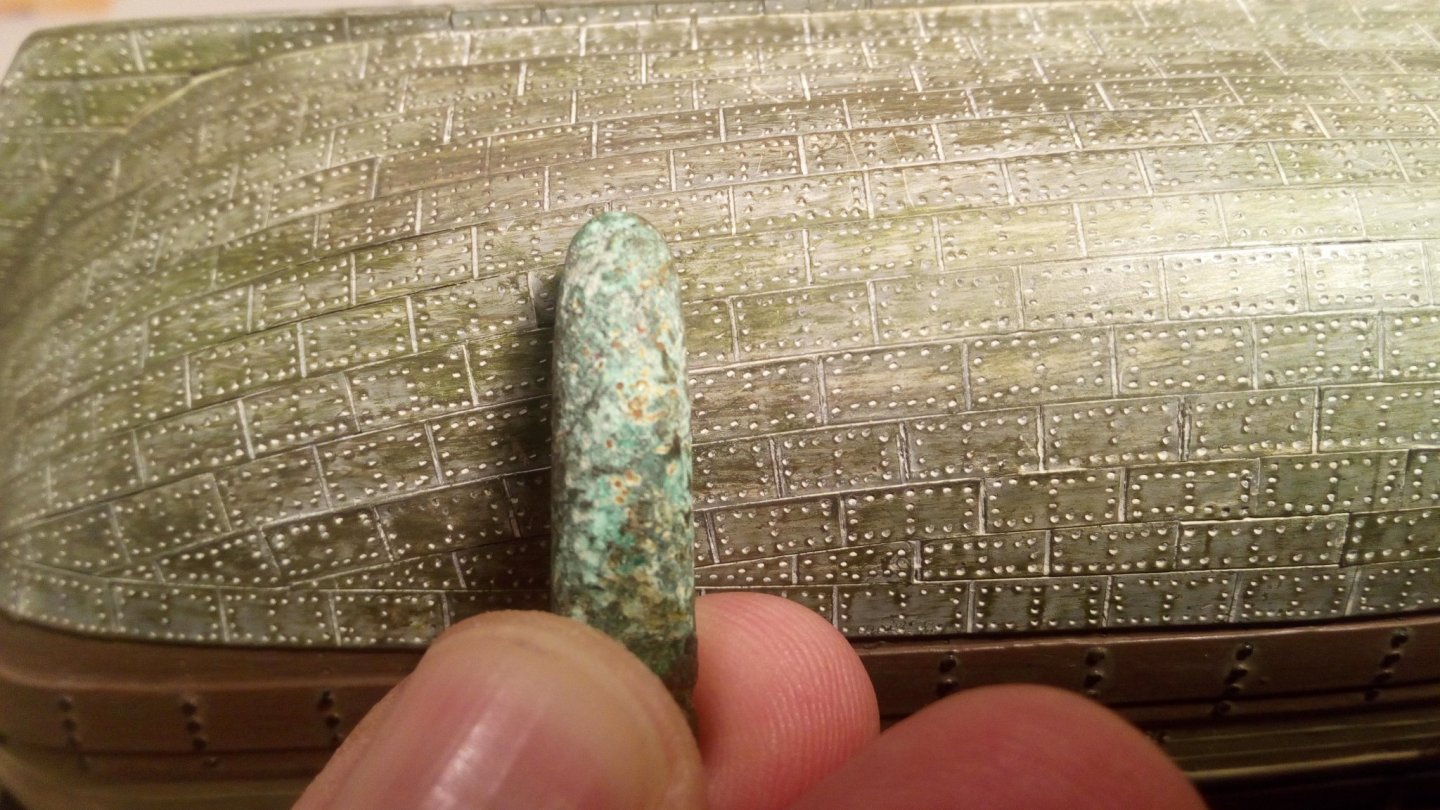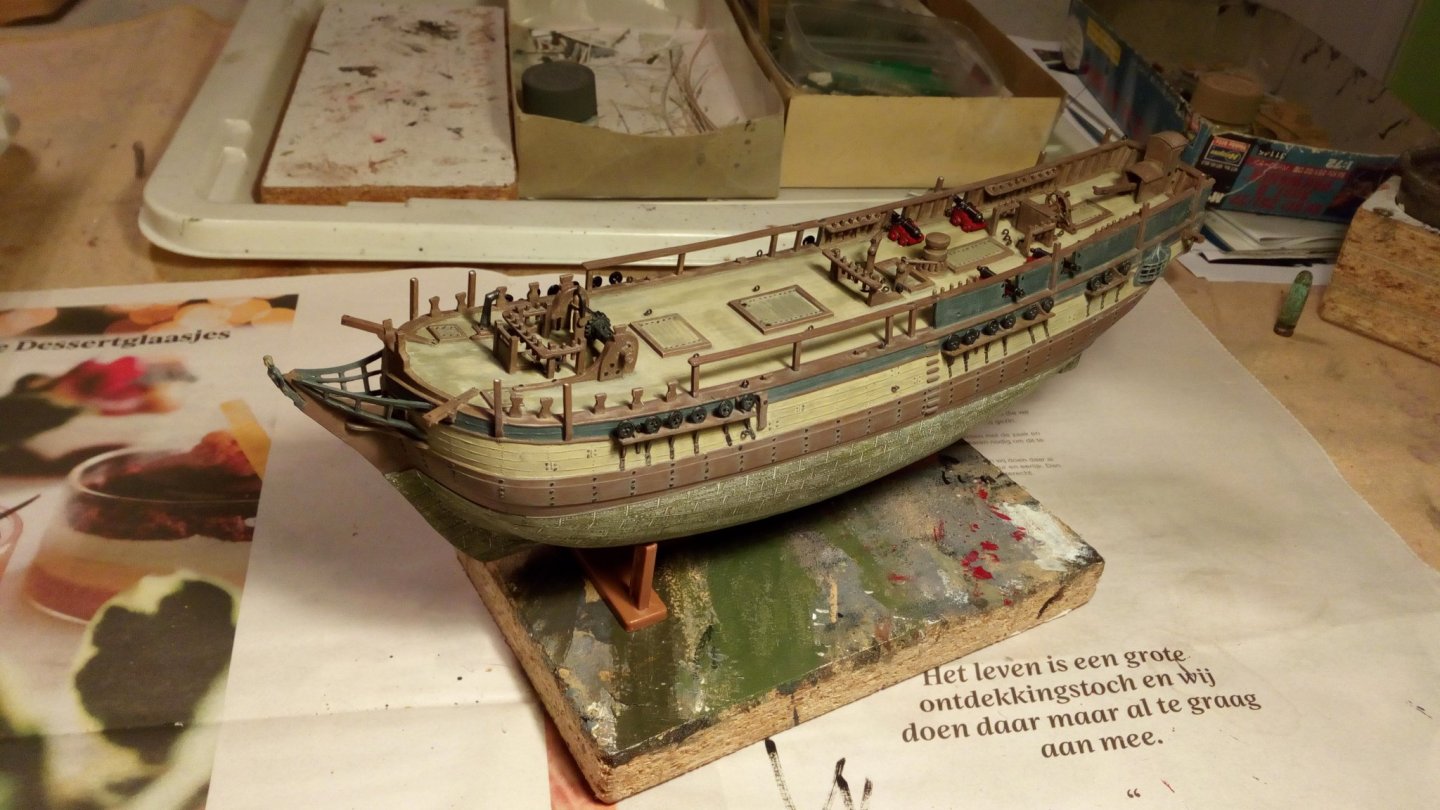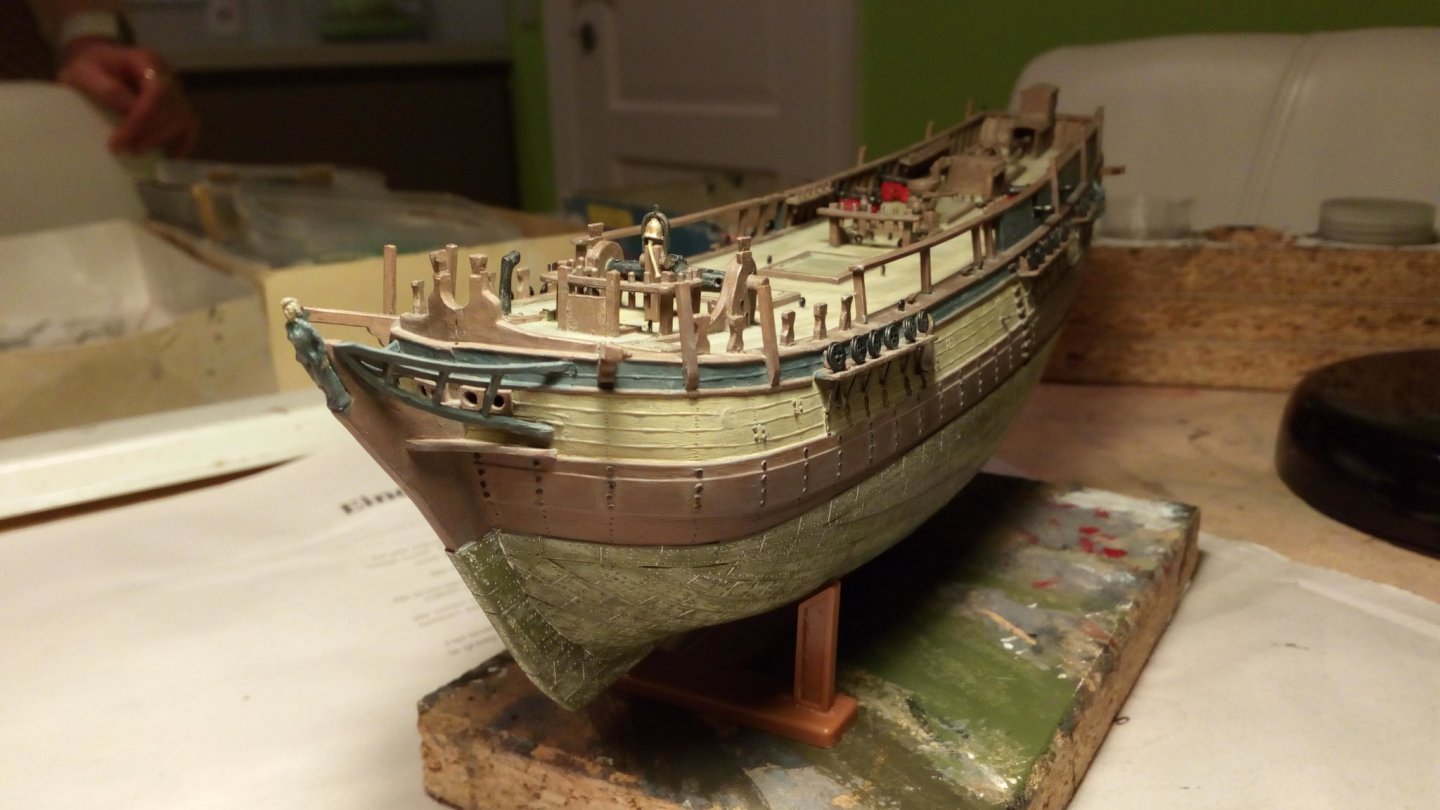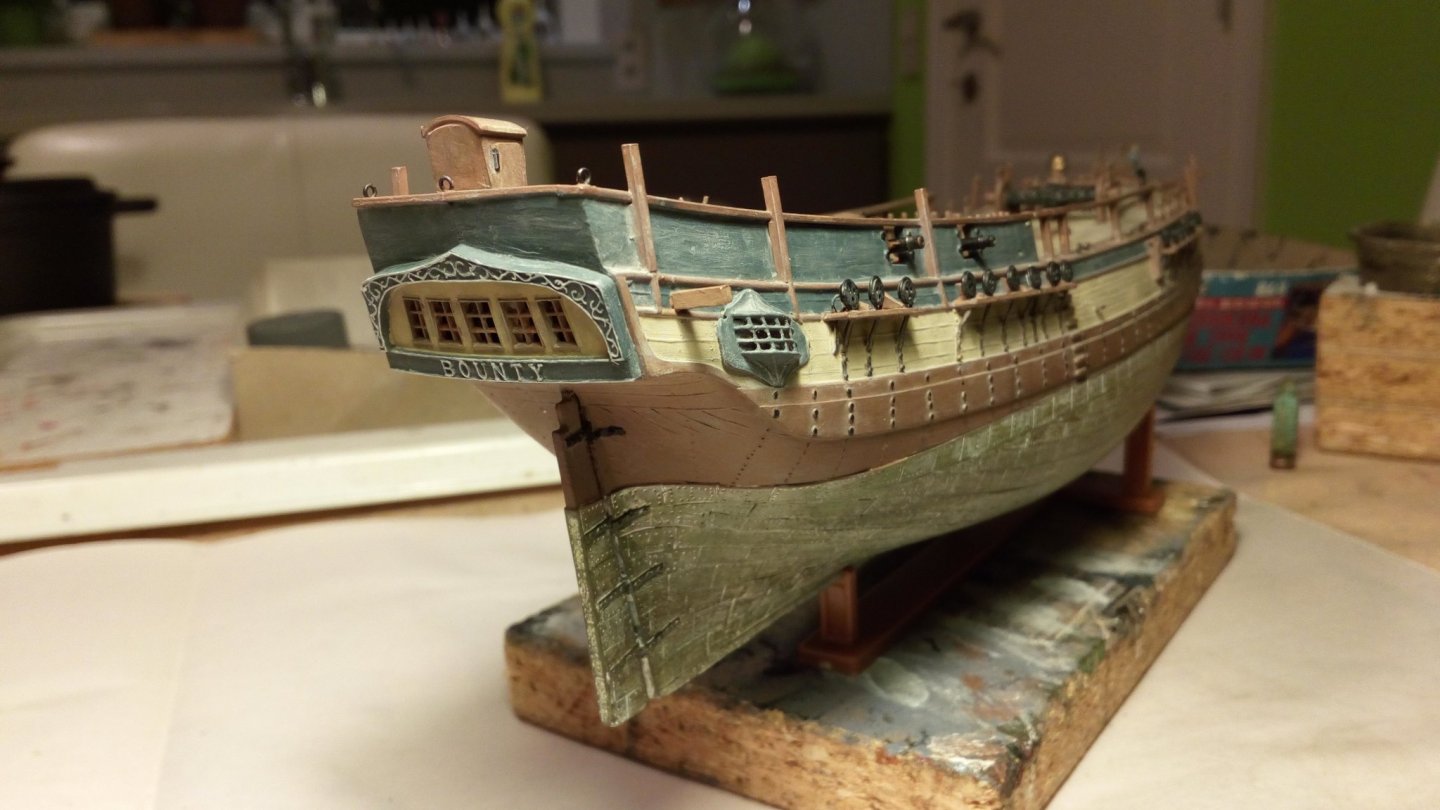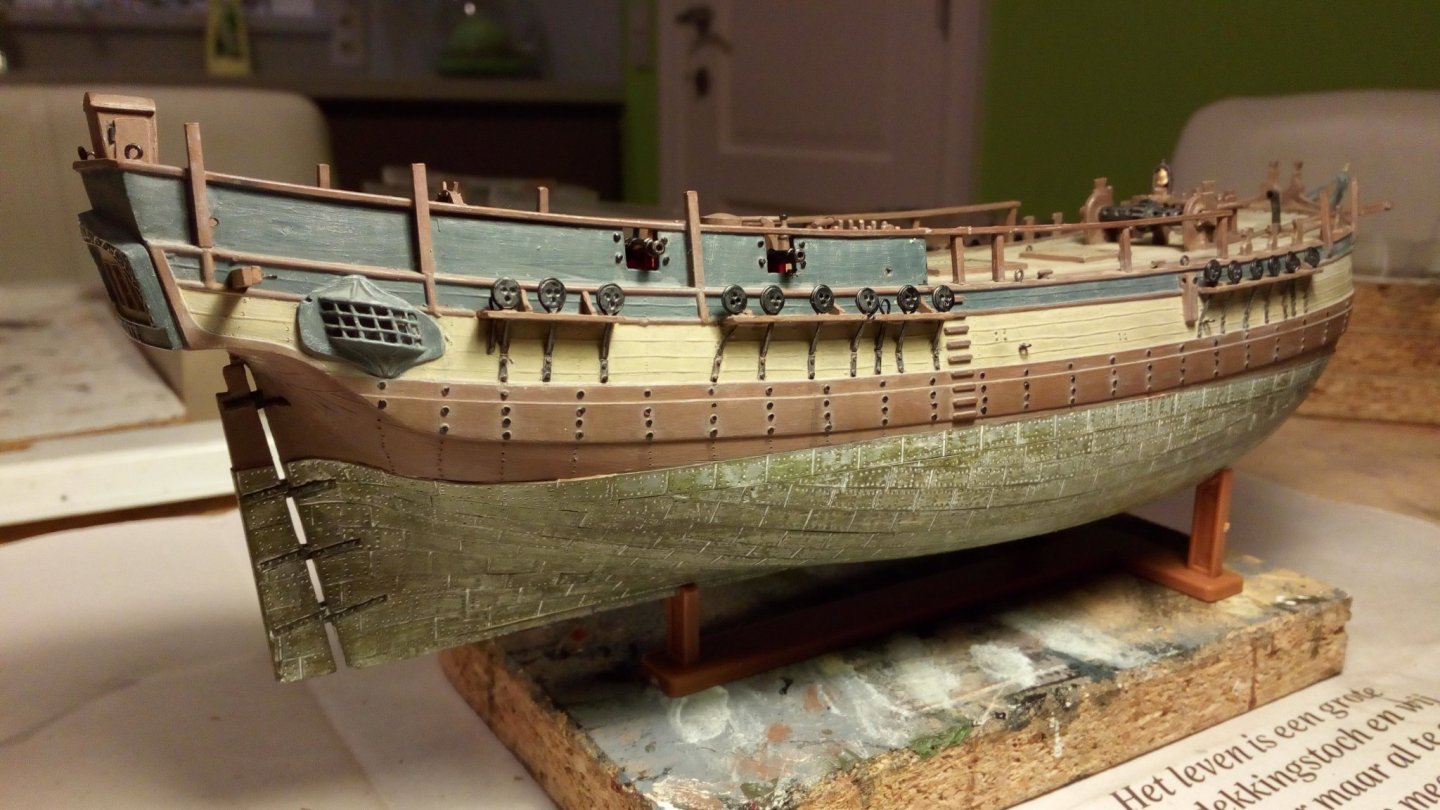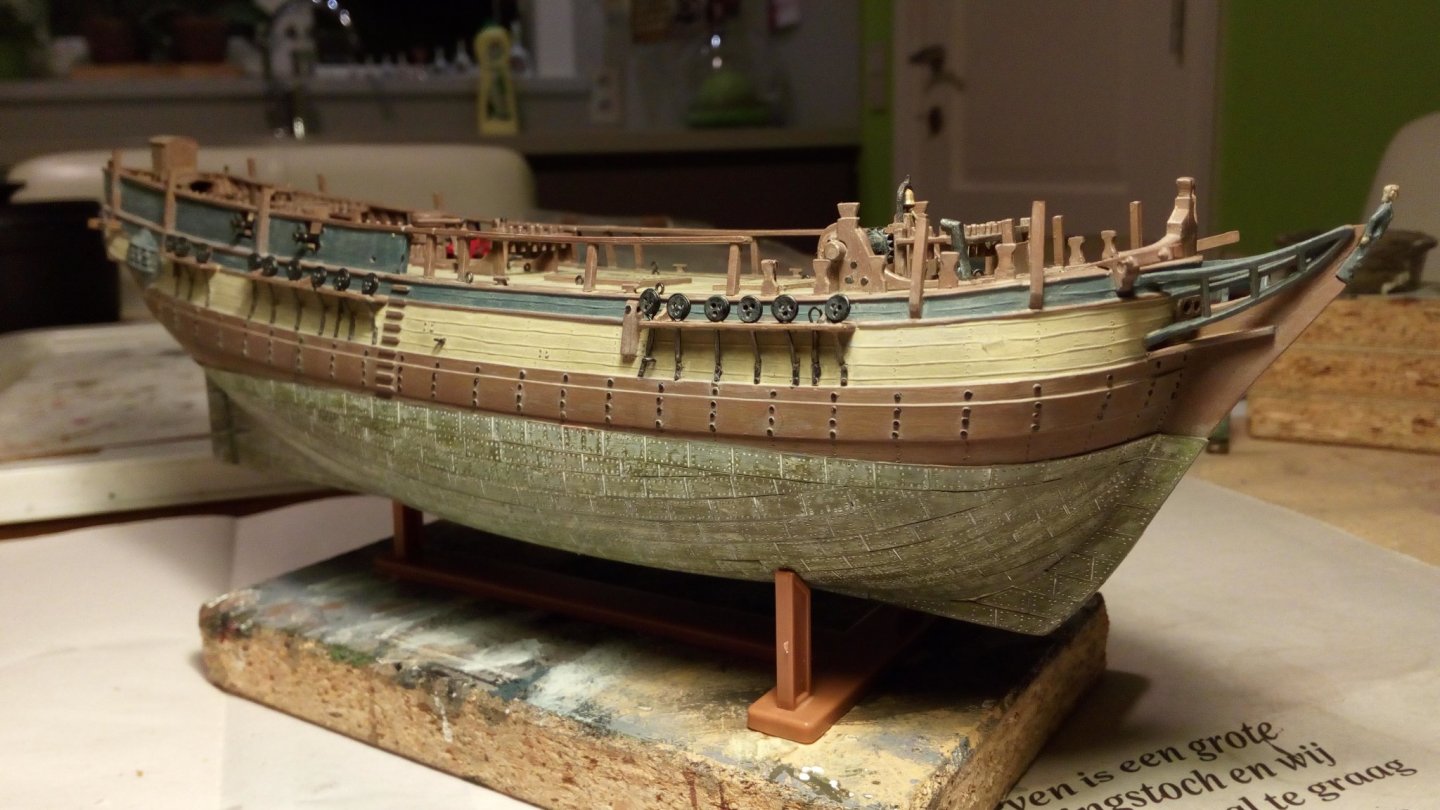-
Posts
4,180 -
Joined
-
Last visited
Content Type
Profiles
Forums
Gallery
Events
Everything posted by Baker
-
Greetings, patrick
-
Greetings, and
-
Greetings Patrick
-
Welcome back and greetings from Belgium
-
Thanks for the nice comments, Building and installing the longboat. Kits parts Boat build with a "mast" Hiding the ugly interior under a "tarpaulin" Ingredients : a piece of paper tissue and lots of CA glue The tissue is cut to size, pushed in the right place and completely covered with CA glue. If you do this the first time. Practice first on another piece The first time the tissue sticks everywhere it should not stick. Longboat supports Extra detail Painted, drybrushed and washed Tarpaulin tied with rope. Longboat in place and secured with rope.
-
Thanks Apxeos. Someone who has built more than 1400 military models. Is probably "a tankman". In the meantime this shipyard has been neglected in function of my little Bounty project. The only thing that happened the last months : The poop deck is largely planked and the LED lighting has been tested. Also, Through these months of silence at this shipyard. I'm thinking about changing the title of this log. Given the fact that making an exact copy of the Golden Hind is impossible. It might be better to delete this name from the title. Maybe "Pelican"- scale 1/45 - How an English armed merchant merchant from the 2nd half of the 16th century may have looked like. Merry Christmas and a happy 2020 to everyone
- 756 replies
-
- galleon
- golden hind
-
(and 2 more)
Tagged with:
-
The text on the hull of this model RAST . V . TER . WAPEN . GHY . CHRISTEN . SCHAPEN . WILT . STRYT . BEGINNEN ???? U TER WAPEN GIJ KRISTEN SCHAPEN WIL STRIJD BEGINNEN Something like : CHRISTIANS, AT ARMS. IF YOU WANT TO START THE BATTLE ( In my poor google english..) I expect the same problem with my Pelican /Golden Hind
-
Greetings, and
-
Rigging the cannnons, the helm and the anchor cables on the deck . Cannon rigging in a 1/110 scale... Stressful to me (in my opinion) it took me more then 1 hour for each cannon. The helm anchor cabels. To get these flat on the deck they are glued on deck with ca glue. Carefully applied to a toothpick. Thanks for following
-
Ab, Then we have the same opinion about this book
- 332 replies
-
- fluit
- abel tasman
-
(and 1 more)
Tagged with:
-

HMS ROYAL KATHERINE 1664 by Doris - 1/55 - CARD
Baker replied to DORIS's topic in - Build logs for subjects built 1501 - 1750
Thank you for these fantastic updates- 1,035 replies
-
- royal katherine
- ship of the line
-
(and 1 more)
Tagged with:
-
Great work markus. Very interesting build. A question to Ab This plan is included in the book "Risse von schiffen des 16. und 17 jahrhunderts" If I look at the plans of Golden Hind that are also included, they don't look really reliable. Am I right?
- 332 replies
-
- fluit
- abel tasman
-
(and 1 more)
Tagged with:
-

Formula for Spars for Warships of Spain
Baker replied to Jeffrey Modell's topic in Masting, rigging and sails
There is not much (reliable) information about galleons in the 16th century. Simply because little was documented at that time. Maybe this book helps -
G.L. Hoed af voor uw technisch tekenen (I take my hat off for your drawing skills). Druxey, Thanks for the warning
- 168 replies
-
Painting and weathering of the hull. Painting the ded eyes and chains matt black washings with diluted light gray, some rust on the chains and a dry brushing of dark gray on the ded eyes. Given that the entire hull and deck are "weathered", the copper sheeting cannot be look new either. So, how does weathered red copper look like? No idea at first, then I remembered some rounds of ammunition that I once found near the house where I grew up. To make a small river deeper, mud had been dug out, and there lay a clip with 5 rounds Presumably remains of WW 1 or 2. Felix has no idea what's going on At first sight, It looks pretty much the same For now I leave the collor this way used paints : White wash And 3 green collors Cannons are glued on the deck A plastic plate is glued to the bottom. This is so the cannon is glued with the plate and not with the wheels on the deck. That way you won't see any glue residue on the deck. Hull painted Thanks for following
About us
Modelshipworld - Advancing Ship Modeling through Research
SSL Secured
Your security is important for us so this Website is SSL-Secured
NRG Mailing Address
Nautical Research Guild
237 South Lincoln Street
Westmont IL, 60559-1917
Model Ship World ® and the MSW logo are Registered Trademarks, and belong to the Nautical Research Guild (United States Patent and Trademark Office: No. 6,929,264 & No. 6,929,274, registered Dec. 20, 2022)
Helpful Links
About the NRG
If you enjoy building ship models that are historically accurate as well as beautiful, then The Nautical Research Guild (NRG) is just right for you.
The Guild is a non-profit educational organization whose mission is to “Advance Ship Modeling Through Research”. We provide support to our members in their efforts to raise the quality of their model ships.
The Nautical Research Guild has published our world-renowned quarterly magazine, The Nautical Research Journal, since 1955. The pages of the Journal are full of articles by accomplished ship modelers who show you how they create those exquisite details on their models, and by maritime historians who show you the correct details to build. The Journal is available in both print and digital editions. Go to the NRG web site (www.thenrg.org) to download a complimentary digital copy of the Journal. The NRG also publishes plan sets, books and compilations of back issues of the Journal and the former Ships in Scale and Model Ship Builder magazines.

